(a) if the product obtained by the patented process is new; (b) if there is a substantial likelihood that the identical product was made by the process and the owner of the patent has been unable through reasonable efforts to determine the process actually used.

WORLD TRADE ORGANIZATION
Home | About WTO | News & events | Trade topics | WTO membership | Documents & resources | External relations
Contact us | Site map | A-Z | Search
- legal texts
URUGUAY ROUND AGREEMENT: TRIPS
Part I — General Provisions and Basic Principles
- PART I General Provisions and Basic Principles
- PART II Standards Concerning the Availability, Scope and Use of Intellectual Property Rights
- 1. Copyright and Related Rights
- 2. Trademarks
- 3. Geographical Indications
- 4. Industrial Designs
- 6. Layout-Designs (Topographies) of Integrated Circuits
- 7. Protection of Undisclosed Information
- 8. Control of Anti-Competitive Practices in Contractual Licences
- PART III Enforcement of Intellectual Property Rights
- 1. General Obligations
- 2. Civil and Administrative Procedures and Remedies
- 3. Provisional Measures
- 4. Special Requirements Related to Border Measures
- 5. Criminal Procedures
- PART IV Acquisition and Maintenance of Intellectual Property Rights and Related Inter-Partes Procedures
- PART V Dispute Prevention and Settlement
- PART VI Transitional Arrangements
- PART VII Institutional Arrangements; Final Provisions
Article 1 Nature and Scope of Obligations
1. Members shall give effect to the provisions of this Agreement. Members may, but shall not be obliged to, implement in their law more extensive protection than is required by this Agreement, provided that such protection does not contravene the provisions of this Agreement. Members shall be free to determine the appropriate method of implementing the provisions of this Agreement within their own legal system and practice.
2. For the purposes of this Agreement, the term “intellectual property” refers to all categories of intellectual property that are the subject of Sections 1 through 7 of Part II.
3. Members shall accord the treatment provided for in this Agreement to the nationals of other Members. (1) In respect of the relevant intellectual property right, the nationals of other Members shall be understood as those natural or legal persons that would meet the criteria for eligibility for protection provided for in the Paris Convention (1967), the Berne Convention (1971), the Rome Convention and the Treaty on Intellectual Property in Respect of Integrated Circuits, were all Members of the WTO members of those conventions. (2) Any Member availing itself of the possibilities provided in paragraph 3 of Article 5 or paragraph 2 of Article 6 of the Rome Convention shall make a notification as foreseen in those provisions to the Council for Trade-Related Aspects of Intellectual Property Rights (the “Council for TRIPS”).
Article 2 Intellectual Property Conventions
1. In respect of Parts II, III and IV of this Agreement, Members shall comply with Articles 1 through 12, and Article 19, of the Paris Convention (1967).
2. Nothing in Parts I to IV of this Agreement shall derogate from existing obligations that Members may have to each other under the Paris Convention, the Berne Convention, the Rome Convention and the Treaty on Intellectual Property in Respect of Integrated Circuits.
Article 3 National Treatment
1. Each Member shall accord to the nationals of other Members treatment no less favourable than that it accords to its own nationals with regard to the protection (3) of intellectual property, subject to the exceptions already provided in, respectively, the Paris Convention (1967), the Berne Convention (1971), the Rome Convention or the Treaty on Intellectual Property in Respect of Integrated Circuits. In respect of performers, producers of phonograms and broadcasting organizations, this obligation only applies in respect of the rights provided under this Agreement. Any Member availing itself of the possibilities provided in Article 6 of the Berne Convention (1971) or paragraph 1(b) of Article 16 of the Rome Convention shall make a notification as foreseen in those provisions to the Council for TRIPS.
2. Members may avail themselves of the exceptions permitted under paragraph 1 in relation to judicial and administrative procedures, including the designation of an address for service or the appointment of an agent within the jurisdiction of a Member, only where such exceptions are necessary to secure compliance with laws and regulations which are not inconsistent with the provisions of this Agreement and where such practices are not applied in a manner which would constitute a disguised restriction on trade.
Article 4 Most-Favoured-Nation Treatment
With regard to the protection of intellectual property, any advantage, favour, privilege or immunity granted by a Member to the nationals of any other country shall be accorded immediately and unconditionally to the nationals of all other Members. Exempted from this obligation are any advantage, favour, privilege or immunity accorded by a Member:
(a) deriving from international agreements on judicial assistance or law enforcement of a general nature and not particularly confined to the protection of intellectual property;
(b) granted in accordance with the provisions of the Berne Convention (1971) or the Rome Convention authorizing that the treatment accorded be a function not of national treatment but of the treatment accorded in another country;
(c) in respect of the rights of performers, producers of phonograms and broadcasting organizations not provided under this Agreement;
(d) deriving from international agreements related to the protection of intellectual property which entered into force prior to the entry into force of the WTO Agreement, provided that such agreements are notified to the Council for TRIPS and do not constitute an arbitrary or unjustifiable discrimination against nationals of other Members.
Article 5 Multilateral Agreements on Acquisition or Maintenance of Protection
The obligations under Articles 3 and 4 do not apply to procedures provided in multilateral agreements concluded under the auspices of WIPO relating to the acquisition or maintenance of intellectual property rights.
Article 6 Exhaustion
For the purposes of dispute settlement under this Agreement, subject to the provisions of Articles 3 and 4 nothing in this Agreement shall be used to address the issue of the exhaustion of intellectual property rights.
Article 7 Objectives
The protection and enforcement of intellectual property rights should contribute to the promotion of technological innovation and to the transfer and dissemination of technology, to the mutual advantage of producers and users of technological knowledge and in a manner conducive to social and economic welfare, and to a balance of rights and obligations.
Article 8 Principles
1. Members may, in formulating or amending their laws and regulations, adopt measures necessary to protect public health and nutrition, and to promote the public interest in sectors of vital importance to their socio-economic and technological development, provided that such measures are consistent with the provisions of this Agreement.
2. Appropriate measures, provided that they are consistent with the provisions of this Agreement, may be needed to prevent the abuse of intellectual property rights by right holders or the resort to practices which unreasonably restrain trade or adversely affect the international transfer of technology.
< Previous Next >
- 1. When “nationals” are referred to in this Agreement, they shall be deemed, in the case of a separate customs territory Member of the WTO, to mean persons, natural or legal, who are domiciled or who have a real and effective industrial or commercial establishment in that customs territory. Back to text
- 2. In this Agreement, “Paris Convention” refers to the Paris Convention for the Protection of Industrial Property; “Paris Convention (1967)” refers to the Stockholm Act of this Convention of 14 July 1967. Berne Convention refers to the Berne Convention for the Protection of Literary and Artistic Works; “Berne Convention (1971)” refers to the Paris Act of this Convention of 24 July 1971. “Rome Convention” refers to the International Convention for the Protection of Performers, Producers of Phonograms and Broadcasting Organizations, adopted at Rome on 26 October 1961. “Treaty on Intellectual Property in Respect of Integrated Circuits” (IPIC Treaty) refers to the Treaty on Intellectual Property in Respect of Integrated Circuits, adopted at Washington on 26 May 1989. “WTO Agreement” refers to the Agreement Establishing the WTO. Back to text
- 3. For the purposes of Articles 3 and 4, “protection” shall include matters affecting the availability, acquisition, scope, maintenance and enforcement of intellectual property rights as well as those matters affecting the use of intellectual property rights specifically addressed in this Agreement. Back to text
Read a summary of the TRIPS Agreement
Download full text in: > Word format (31 pages; 150KB) > pdf format (33 pages; 193KB)
The texts reproduced in this section do not have the legal standing of the original documents which are entrusted and kept at the WTO Secretariat in Geneva.
- Go to a basic explanation of the agreements ...
- ...or a more technical one
- List of Abbreviations
Agreement on Trade-Related Aspects of Intellectual Property Rights (TRIPS Agreement)
- Legal Steps for Parents to Address School Bullying: 5 Key Actions
- THE GAUTAM BUDDHA UNIVERSITY- REVIEW
- IMPACT OF COUNTER-TERRORISM ON NON-ASSOCIATED
- How Blockchain Technology Can Revolutionize the Legal Field
- Popular Data Science Tools to Know in 2024
SOCIAL LAWS TODAY is the Largest Legal Blog integrating tremendous knowledge and information amongst the entire legal fraternity and revolutionising Legal Services.
- Community Guidelines
- Country Ambassadors
- Editorial Advisory Board
- Privacy Policy
- Publish Article/Guest Post
- Terms and Conditions
- Advertise with us
TRADE-RELATED ASPECT INTELLECTUAL PROPERTY RIGHTS (TRIPS) AGREEMENT
- by Manish Kumar
- July 31, 2023
- 18 minutes read

Table of Contents
Introduction
In today’s era, the world is becoming familiar with several intellectual inventions which are impacting the relations of one another. The TRIPS agreement, created in 1995 by the WTO, addresses international trade intellectual property rights. This agreement was formed to set standards for protecting and implementing trade rights in different countries. As the TRIPS agreement is an important part of promoting trade, resolving disputes and having fair trade practices.
What is Trade and International Trade?
Trade is the exchange of goods and services between two or more parties. While International Trade means the trade between two independent sovereign nations.
What is Intellectual Property Rights (IPR)?
“Intellectual Property shall include rights relating to literary, artistic, and scientific works, discoveries throughout all areas of human endeavor, scientific advances, industrial design rights, trademarks, service marks, and commercial names and designations, protection against unfair competition,” states Article 2 of the WIPO (World Intellectual Property Organization) – Central Organization for the Protection of Intellectual Property laws and the UN expert organization.
IP is intangible assets of individual mind’s creation. It includes artistic expressions, signs, symbols and names used in commerce, designs and inventions. IPR is legal right given to individual for their creation. The WTO’s TRIPS agreement recognizes the necessity of IP in international market as IPR are valued and exchanged. IP rights give their owners rights to exclude others from making use of their creations only for a limited period. IP rights entitle the owners to receive a royalty or any sort of financial compensation or payment when another person uses their creations [1] .
There are two types of IPR:
- Industrial Property
Details of TRIPS and its Agreement
TRIPS originated in the Uruguay Round of GATT trade negotiations, leading to the WTO’s establishment in 1995. It aimed to address concerns about inadequate intellectual property protection and enforcement. TRIPS introduced minimum standards for various forms of IP and sought to balance protection with innovation and fair trade. It also established dispute settlement mechanisms. Additionally, TRIPS shaped global IP norms, influenced domestic laws, and spurred discussions on public health, access to medicines, and traditional knowledge. It is a crucial international framework for IP protection and enforcement.
What is TRIPS?
TRIPS stands for Trade-Related Aspects of Intellectual Property Rights. The TRIPS agreement is a WTO-administered international agreement setting minimum standards for IP protection among member countries. TRIPS covers various forms of IP, including patents, copyrights, trademarks, industrial designs, and trade secrets. Moreover, It aims to establish a balance between protecting IP rights and promoting innovation, technology transfer, and fair international trade. TRIPS also provides a framework for dispute resolution and encourages cooperation among nations in the field of intellectual property. [2]
Before the establishment of the WTO, the leading international agreements under WIPO were the Paris Convention for the Protection of Industrial Property (covering patents, industrial designs, etc.) and the Berne Convention for the Protection of Literary and Artistic Works (covering copyright). However, these agreements did not cover all areas of intellectual property, and in some cases, the prescribed standards of protection were considered insufficient. The TRIPS Agreement was introduced to supplement these existing international standards and significantly enhance the level of intellectual property protection globally.
What is Agreement on TRIPS?
The TRIPS Agreement was established in 1995 as part of the World Trade Organization (WTO) agreement. It sets forth minimum standards for the availability, scope, and use of various forms of intellectual property, including trademarks, copyrights, geographical indications, patents, industrial designs, layout designs for integrated circuits, and undisclosed information or trade secrets. Moreover, It applies to all member states of the WTO and incorporates fundamental international trade principles regarding intellectual property.
One of the key aspects of the TRIPS Agreement is the provision of exceptions and limitations that strike a balance between the interests of intellectual property and those of public health and economic development. Additionally, This agreement plays a significant role in facilitating trade in creativity and knowledge, resolving trade disputes related to intellectual property, and providing WTO members with the flexibility to pursue their domestic policy objectives. It also outlines the importance of innovation, technology transfer, and public welfare within the framework of the intellectual property system.
The administration and monitoring of the TRIPS Agreement is the responsibility of the TRIPS Council. The agreement was negotiated during the Uruguay Round of the General Agreement on Tariffs and Trade (GATT) from 1986 to 1994. It is often referred to as a “Berne and Paris-plus” Agreement, signifying its extension beyond the provisions of the Berne Convention for the Protection of Literary and Artistic Works and the Paris Convention for the Protection of Industrial Property. [3]
Issue govern by TRIPS Agreement [4]
Majorly 3 types of issue is governed under this agreement
- Standards: Member states must establish minimum criteria for protecting intellectual property rights (IPRs) in each covered category, including subject matter, granted rights, exceptions, and minimum duration of protection.
- Enforcement: The Agreement covers domestic enforcement processes and remedies for intellectual property rights, including rules on civil, administrative, and criminal proceedings, provisional measures, border requirements, ensuring effective exercise of right holders’ rights.
- Dispute resolution: WTO member disputes on TRIPS Agreement responsibilities are resolved through the WTO’s dispute resolution processes.
Objective and importance of TRIPS
Objective: To promote and defend intellectual property rights to facilitate technology transfer, fair international trade, and innovation. Establish guidelines, enforce procedures, support developing nations, encourage global cooperation, and balance IP protection with public interests and economic development. [5]
Importance: The TRIPS Agreement, a treaty among WTO member countries, aims to safeguard intellectual property rights by setting minimum standards of protection. It encourages innovation, economic growth, and job creation while providing a legal framework for enforcement and combating piracy. It promotes a level playing field for international trade in intellectual property rights, benefiting all WTO members. [6]
Parts of TRIPS Agreement
- PART I GENERAL PROVISIONS AND BASIC PRINCIPLES:- Deals with Article 1 to 8
- PART II STANDARDS CONCERNING THE AVAILABILITY, SCOPE AND USE OF INTELLECTUAL PROPERTY RIGHTS:- Deals with Article 9 to 40
- PART III ENFORCEMENT OF INTELLECTUAL PROPERTY RIGHTS:- Deals with Article 41 to 61
- PART IV ACQUISITION AND MAINTENANCE OF INTELLECTUAL PROPERTY RIGHTS AND RELATED INTER-PARTES PROCEDURES:- Deals with Article 62
- PART V DISPUTE PREVENTION AND SETTLEMENT:- Deals with Article 63 to 64
- PART VI TRANSITIONAL ARRANGEMENTS:- Deals with Article 65 to 67
- PART VII INSTITUTIONAL ARRANGEMENTS; FINAL PROVISIONS:- Deals with Article 68 to 73. [7]
General provisions and basic principles
Articles 3, 4, and 5 of the TRIPS Agreement outline the essential principles of national and most-favored-nation treatment for foreign individuals and entities in relation to intellectual property. These principles cover all aspects of intellectual property protection, including standards, availability, acquisition, scope, maintenance, enforcement, and use. The national treatment provision prohibits discrimination between a member’s own nationals and those of other members, while the most-favored-nation treatment clause prohibits discrimination between nationals of different members.
TRIPS allows for the same exclusions permitted under the pre-existing WIPO intellectual property treaties in terms of national treatment commitments. Governments also have the authority to enact legislation to prevent IPR abuse or challenge practices that unjustly restrict commerce or hinder the international transfer of technology, in accordance with the provisions of the Agreement. [8] [9]
Kinds of IP
Part 2 (“STANDARDS CONCERNING THE AVAILABILITY, SCOPE AND USE OF INTELLECTUAL PROPERTY RIGHTS”) of “AGREEMENT ON TRADE-RELATED ASPECTS OF INTELLECTUAL PROPERTY RIGHTS” contains all the kinds of IP.
They are as follows: [10] [11]
Section 1:- Copyright and Related Rights (Article 9 to 14)
According to the Agreement, copyright protection applies to various forms of creative works, including literary, musical, dramatic, photographic, sculptural, architectural, choreographic, graphic, motion picture, sound recording, multimedia works, and computer programs. The copyright owner has the exclusive rights to control the reproduction, distribution, derivative works, performance, exhibition, and utilization of the copyrighted work for a certain period of time. Copyright protection is based on originality rather than innovation, meaning the work must be created by the copyright owner or claimant, but it does not necessarily have to be groundbreaking or innovative.
The Berne Convention extends copyright protection to computer programs in both source and object code. Compilations of data in various formats, protected due to the selection or arrangement of their contents, are also recognized as creative works. Authors of computer programs and cinematographic works have the right to control the commercial rental of original or copied works to the public. However, member governments have the authority to revoke rental rights if it leads to widespread copying that threatens the uniqueness of the work. The minimum term of copyright protection is not less than 50 years, as stated in Article 12 of the Agreement.
Section 2:- Trademarks (Article 15 to 21)
Article 15 of the Agreement states that any sign or combination of signs capable of distinguishing the products or services of one undertaking from those of others is eligible for trademark registration, as long as it is perceptible. This includes words, characters, digits, figurative elements, color combinations, and any combinations thereof. Article 16 grants the trademark owner exclusive rights to prevent third parties from using similar or identical signs for goods or services that are similar to those covered by the registered trademark.
Section 3:- Geographical Indications (Article 22 to 24)
Article 22 of the Agreement recognizes geographical indications as designations that identify a good as originating from a specific territory or region. The quality, reputation, or unique characteristics of the product are primarily attributed to its geographical origin. Geographical indications have traditionally been associated with goods produced in specific territories. They serve as reliable indicators of the product’s qualities, and their significance is comparable to trademarks, warranting legal protection.
Section 4:- Industrial Designs (Articles 25 to 26)
Articles 25 and 26 of the TRIPS Agreement require member states to provide protection for original and distinctive industrial designs. The Agreement, building upon the principles of the Paris Convention, sets a minimum duration of 10 years for the protection of industrial designs. When commercial activities are involved, the rights holder has the authority to prohibit third parties from producing, importing, or selling products that incorporate the protected design without the holder’s consent. The TRIPS Agreement expands upon the scope of protection provided by the Paris Convention, offering stronger safeguards for industrial designs.
Section 5:- Patents (Articles 27 to 34)
Article 27 of the TRIPS Agreement establishes patents as intellectual property rights granted to inventors, enabling them to prevent others from creating, using, selling, or importing the patented invention within a designated region for a specified period. However, patentability is subject to three exceptions. Firstly, inventions contrary to public health, animal or plant life, or the environment are excluded. Secondly, diagnostic, medicinal, and surgical procedures for human and animal treatment may be excluded from patentability.
The standard term of patent protection is 20 years from the filing date, with member nations having the flexibility to provide limited exemptions to exclusive patent rights under Article 21. These exemptions should not unreasonably prejudice the legitimate interests of patent owners or conflict with the normal exploitation of the patent, while considering the legitimate interests of third parties. Additionally, Article 29 requires patent applications to disclose the invention in a clear and complete manner that enables a person skilled in the relevant field to carry it out.
Article 31 permits a member government to issue a compulsory license for medicines without the patentee’s consent in certain circumstances. This provision ensures access to essential medications, subject to specific requirements.
Section 6:- Layout-Designs (Topographies) of Integrated Circuits (Article 35 to 38)
Article 36 of the TRIPS Agreement prohibits importing, selling, or distributing secured layout designs, integrated circuits containing secured layout designs, or articles incorporating such circuits for commercial purposes. This intellectual property sector guarantees protection for layout designs for a minimum of ten years from the date of filing an application. However, member countries have the option to limit the duration of protection to fifteen years from the date of the layout design’s creation, as stated in Article 37. This provision allows flexibility for member nations to determine the specific length of protection for layout designs within the provided range.
Section 7:- Protection of Undisclosed Information (Article 39)
Article 39 of the TRIPS Agreement protects trade secrets, which refer to undisclosed information. Member states must provide trade secret protection in line with the Agreement’s provisions. TRIPS stipulates that countries should enact national laws to prevent the unauthorized disclosure, acquisition, or use of trade secrets by third parties without the consent of the rightful owner, in a manner inconsistent with fair trade practices. To qualify for protection, the information must be confidential, possess commercial value due to its confidentiality, and have been subject to reasonable measures to maintain its secrecy. The TRIPS Agreement recognizes the importance of safeguarding trade secrets and encourages member countries to establish legal frameworks that effectively protect such valuable undisclosed information.
Section 8:- Control of Anti-Competitive Practices in Contractual Licenses (Article 40)
The members of the TRIPS Agreement recognize that certain licensing arrangements or restrictions related to intellectual property rights (IPR) can hinder competition, trade, and the transfer of technology. To address this concern, the Agreement includes provisions allowing governments to engage in discussions when there is an infringement of IPR that negatively affects competition. In specific cases, the TRIPS Agreement provides flexibility by waiving certain requirements typically needed for issuing a compulsory license for a patent. For instance, a compulsory license may be granted by the government to remedy an anti-competitive practice.
These provisions reflect the recognition that striking a balance between intellectual property rights and competition is crucial for promoting innovation, technology dissemination, and fair trade. The TRIPS Agreement allows exceptions in cases of anti-competitive behavior to prevent intellectual property rights misuse that hinders market competition or technology transfer. This approach encourages a more balanced and inclusive intellectual property framework that promotes both innovation and fair market practices.
Enforcement
Part 3(ENFORCEMENT OF INTELLECTUAL PROPERTY RIGHTS) of “AGREEMENT ON TRADE-RELATED ASPECTS OF INTELLECTUAL PROPERTY RIGHTS” contains the enforcement. The TRIPS Agreement mandates that governments ensure the effective enforcement of intellectual property rights (IPR) to prevent or deter infringement. Enforcement methods should be fair, equitable, and not excessively burdensome or costly. Unreasonable deadlines or unwarranted delays should not be imposed. Moreover, Individuals should have the right to seek judicial review, challenge administrative decisions, or appeal lower court judgments.
The Agreement provides detailed provisions for defending IPR, including requirements for evidence gathering, interim measures, injunctions, damages, and other penalties. It stipulates that courts should have the authority to order the disposal or destruction of infringing objects in specific circumstances. Treating willful trademark counterfeiting or commercial-scale copyright infringement as a criminal offense is necessary. Governments must also ensure that rights holders receive assistance from customs authorities to prevent the importation of counterfeit and pirated goods. These provisions aim to establish robust mechanisms for the protection and enforcement of IPR in a manner that upholds fairness and safeguards against infringement. [12] [13]
TRANSITIONAL ARRANGEMENTS
PART 6 (TRANSITIONAL ARRANGEMENTS) of “AGREEMENT ON TRADE-RELATED ASPECTS OF INTELLECTUAL PROPERTY RIGHTS” says that the TRIPS Agreement allowed for varying transition periods during which member countries could delay the implementation of its provisions. The timeframes were set from January 1, 1995 (Agreement’s entry into force) until implementation in each country. The main transition periods were as follows:
- Developed countries had a one-year transition period, ending on January 1, 1996, following the entry into force of the WTO Agreement.
- The TRIPS provisions, excluding Articles 3, 4, and 5 that cover non-discrimination principles, granted developing countries an additional four years until January 1, 2000, to implement.
- Transition economies, countries transitioning from centrally planned to market economies, could also benefit from the same extension until January 1, 2000, provided they met specific additional criteria.
- Least-developed countries were granted an extended transition period until January 1, 2006, with the potential for additional extensions. They have extended the transition period three times, and it currently continues until July 1, 2034, or until a member no longer qualifies as a Least Developed Country (LDC), whichever comes first.
These transition periods aimed to allow countries time to adjust their laws and institutions to comply with the TRIPS Agreement, taking into account the varying levels of development and capacity among member nations. [14] [15]
Institutional arrangements
Part 7(INSTITUTIONAL ARRANGEMENTS; FINAL PROVISIONS) of “AGREEMENT ON TRADE-RELATED ASPECTS OF INTELLECTUAL PROPERTY RIGHTS”:-
Article 68 of the TRIPS Agreement establishes the TRIPS Council as the governing body responsible for the administration and implementation of the Agreement. Moreover, The TRIPS Council oversees members’ compliance with their obligations under the Agreement and provides a platform for consultation on trade-related aspects of intellectual property rights.
The TRIPS Council fulfills any additional duties delegated to it by the members, which may include providing assistance requested by members in the context of dispute resolution procedures. Moreover, It has the authority to consult with and gather information from any relevant source it deems necessary to carry out its responsibilities.
The TRIPS Council plays a crucial role in ensuring the effective implementation and enforcement of intellectual property rights within the framework of the TRIPS Agreement. It serves as a forum for discussions, cooperation, and information exchange among member countries on matters related to intellectual property rights and their impact on international trade. [16] [17]
Pros and cons of TRIPS Agreement
TRIPS encourage R&D, innovation, and equitable global trade while attracting investment. It facilitates technology transfer, provides legal certainty, and supports access to medicines. TRIPS also safeguards traditional knowledge and promote international cooperation in intellectual property. It enhances IP policy transparency, strengthens WIPO’s legal system, reduces trade conflicts, and promotes patent applications in developing countries. [18] [19]
TRIPS establish requirements for patent protection, which can have both positive and negative impacts. While it strengthens patent protection, it can lead to increased prices, potential deadweight losses, and limited stimulation of local innovation. Some industries, such as fertilizers, insecticides, pharmaceuticals, and procedures, previously benefited from the absence of patent protection, resulting in low-cost food and drugs. Lack of copyright protection for informational products fostered education and technology transfer. However, TRIPS does not provide explicit protection for traditional knowledge. [20]
Analysis
The TRIPS Agreement, while imposing essential obligations on member nations to protect intellectual property rights, has had significant implications for developing countries. The stringent intellectual property restrictions often hinder the growth of indigenous enterprises in these regions. Implementing intellectual property rights in developing nations must be cautious to prevent negative impacts on the economy and public health.
The consequences of the patent protection regime, for instance, can have a discouraging effect on the development of local sectors, such as pharmaceuticals. It is crucial to ensure that intellectual property rights are not used to impede the interests of developing nations, especially in areas like public health where harm is already prevalent. Consequently, there is a need for a re-evaluation of the implementation of intellectual property rights, with effective and strict enforcement of exceptions when required.
The TRIPS Agreement has had a noticeable impact on intellectual property rights protection in poor nations, but its effect on developed countries has been less discernible. This is due to the fact that the TRIPS requirements were designed to align as closely as possible with the existing intellectual property protection systems in many developed nations. Therefore, compliance with the TRIPS Agreement did not necessitate significant policy changes in developed countries. Additionally, developed nations that heavily rely on exports to countries advocating for the inclusion of TRIPS in the WTO may consider the potential for retaliatory trade penalties seriously, as they stand to lose substantial export revenues. This demonstrates the effectiveness of the TRIPS Agreement as a coercive tool in international economic negotiations.
Many criticisms have questioned the TRIPS Agreement’s validity and efficacy, particularly its impact on developing nations. Even proponents of free trade, such as Martin Wolf, have criticized TRIPS as hypocritical, perceiving it as a rent-seeking mechanism that could have detrimental consequences for education, public health, and economic growth in many poor nations. Some argue that major corporations, not developed countries, are the actual beneficiaries of TRIPS due to their advocacy for adoption. TRIPS has also failed to address policymakers’ concerns, as trade imbalances have continued to worsen, and the current emphasis on private rights may hinder innovation and knowledge dissemination in developed nations in the long run.
While cautioning against misrepresenting the impact of TRIPS, it is evident that the agreement has not functioned as intended. A tiered structure providing meaningful special treatment based on developmental needs would have been more beneficial. Major revisions to TRIPS for the benefit of developing nations are uncertain due to its entrenched position within the WTO.
TRIPS mandates robust intellectual property rights protection among its member states. It encompasses copyright rights for authors, performers, sound recording producers, and broadcasting organizations. It covers geographical indications, industrial designs, integrated circuit layout designs, patents, plant varieties, trademarks, trade names, as well as confidential information. TRIPS includes provisions for enforcement procedures, remedies, and dispute-resolution mechanisms. Additionally, it incorporates a most favored nation (MFN) clause, ensuring equal treatment among member states.
The TRIPS Agreement is indeed a crucial component of the global intellectual property protection system. Moreover, It establishes a standardized framework to enforce and protect intellectual property rights, promoting fairness and international trade. The TRIPS Agreement harmonizes global intellectual property laws, fostering robust protection and enforcement of these rights.
To read related articles click here
[1] https://byjus.com/free-ias-prep/trade-related-aspects-of-intellectual-property-rights-trips/
[2] https://www.wto.org/english/docs_e/legal_e/27-trips_03_e.htm
[3] https://byjus.com/free-ias-prep/trade-related-aspects-of-intellectual-property-rights-trips/
[4] https://blog.ipleaders.in/all-you-need-to-know-about-the-trips-agreement/#What_is_the_TRIPS_Agreement_about
[5] https://testbook.com/ias-preparation/trips-agreement
[6] https://testbook.com/ias-preparation/trips-agreement
[7] https://www.wto.org/english/docs_e/legal_e/27-trips.pdf
[8] https://www.wto.org/english/docs_e/legal_e/27-trips.pdf
[9] https://blog.ipleaders.in/all-you-need-to-know-about-the-trips-agreement/#Advantages_of_the_TRIPS_Agreement
[10] https://blog.ipleaders.in/all-you-need-to-know-about-the-trips-agreement/#Advantages_of_the_TRIPS_Agreement
[11] https://www.wto.org/english/docs_e/legal_e/27-trips.pdf
[12] https://blog.ipleaders.in/all-you-need-to-know-about-the-trips-agreement/#Advantages_of_the_TRIPS_Agreement
[13] https://www.wto.org/english/docs_e/legal_e/27-trips.pdf
[14] https://www.wto.org/english/docs_e/legal_e/27-trips.pdf
[15] https://blog.ipleaders.in/all-you-need-to-know-about-the-trips-agreement/#Advantages_of_the_TRIPS_Agreement
[16] https://blog.ipleaders.in/all-you-need-to-know-about-the-trips-agreement/#Advantages_of_the_TRIPS_Agreement
[17] https://www.wto.org/english/docs_e/legal_e/27-trips.pdf
[18] https://blog.ipleaders.in/all-you-need-to-know-about-the-trips-agreement/#Advantages_of_the_TRIPS_Agreement
[19] https://testbook.com/ias-preparation/trips-agreement
[20] https://blog.ipleaders.in/all-you-need-to-know-about-the-trips-agreement/#Advantages_of_the_TRIPS_Agreement
Share This Post:
Absolute liability in tort law: balancing accountability and fairness., defences of accident under section 80 of ipc, leave feedback about this cancel reply.
- Quality 5 4 3 2 1
- Price 5 4 3 2 1
- Service 5 4 3 2 1
Related Post

The role of legal education in promoting social justice

What Assets Qualify for Probate in California?
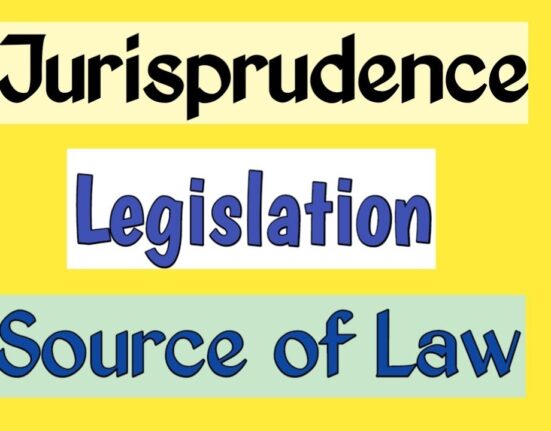
Legislation as a source of law under Jurisprudence

Custom as a source of International law
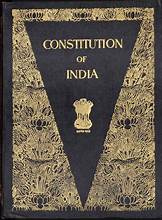
Precedents as a source of law

Major Authorities under the Companies Act 2013

- Post Your Article
- My Favorites
- Register your Copyright Online : We offer copyright registration right from your desktop Call us at Ph no: 9891244487
- File Mutual Consent Divorce : Right Away Call us at Ph no: 9650499965
- Online legal Advice : Receive professional Legal Solution within 48hrs
- Contact a lawyer From your City - Lawyers in India
- File caveat in Supreme Court
A To Z of Trips: An Agreement on Trade Related Aspects of Intellectual Property Rights
Emergence of the TRIPS Agreement
The Agreement on Trade related Aspects of Intellectual Property Rights (hereinafter referred to as TRIPS), together with the 1967 Stockholm Conference that adopted the revised Berne and the Paris Convention which created the World Intellectual Property Organization (WIPO) can be termed as the most significant milestone in the development of intellectual property rights in this century. It not only widened the scope of industrial property but also made provision to cover up for failed treaties. Thus, its scope was much vast than any of the erstwhile international agreement. The real worth of the TRIPS agreement was due to its success in enshrining very detailed rules on the issue of enforcement. For an understanding of the progression of the TRIPS, it is necessary that we should trace the history of intellectual property rights and the vital role played by GATT in enhancing its protection. As already discussed the initiative for establishing ITO was launched in 1946 by a decision of the UN Council for Economic and Social Affairs (ECOSOC). A committee comprised of representatives from18 countries were asked to draft the ITO charter for the purpose of promoting the expansion of trade and protection exchange and consumption of goods.[1] Ultimately a couple of conferences lead to the signing of a treaty on October 30, 1947 adopting GATT at Geneva. Failure to adopt ITO charter led to the restructuring of the GATT and its Secretariat from 1948 till the establishing of the World Trade Organization (WTO) on January 1, 1995.The GATT was applied on a provisional basis as a covenant amongst a number of governments. Thus, it was applied to government not citizens and was not self-executing. The interim committee of ITO was the employer of the GATT secretariat staff. GATT allows contracting parties to adopt or enforce measures which are necessary to secure compliance with laws or regulations which are not consistent with the provision of this agreement including those relating to the protection of patents, trademarks, copyright etc.[2] The Provisions were invoked in two disputes brought before GATT panels. Apart from this, WIPO also administered two principle international intellectual property covenants- The Paris Convention for the Protection of Industrial Property and the Berne Convention for protection of Literary and Artistic Works. WIPO also administers a number of agreements designed to facilitate acquisition of multi country production for industrial property.[3] But the absence of detailed rules on enforcement of rights in front of national judicial administrative authorities and the absence of binding and effective dispute settlement mechanism were main flaws in the Paris and Berne Conventions. In addition to this the evolution of the world trading system, sky rocketing importance of intellectual property and technology changes, especially generally computerization and digital technology, required a serious updating of intellectual property rules. Â
The Uruguay Round
To remove the above said shortcomings and bring in new standards, the ministerial conference launched the Uruguay round of multilateral trade negotiations at Punta del est in September, 1986. The United States and Japan submitted proposal to the round’s preparatory Committee to cover all intellectual property rights and their enforcement.[4]However Brazil and Argentina opposed the inclusion of it. The ministers included the item "Trade Related Aspect of Intellectual Property Rights" including trade in counterfeit goods. This round was the broadest and most extensive multilateral agreement in the field of intellectual property. It covered the entire area and added enforcement, acquisition and most favored nation obligation to the existing rules. The negotiations had to essentially address the question of trade in counterfeit goods taking into account the work already done in the GATT. The pressure on the developing countries to ratify GATT was immense. A powerful group of US chemical, pharmaceutical, computer, entertainment, publishing and electronic corporation lobbied with the US government[5] to introduce intellectual property issues into the multilateral trade negotiation under the GATT. The chairman of Pfizer, a US based pharmaceutical company, was considered the driving force behind this move. He was made the chairman of the Advisory committee for trade negotiations in 1981 to shape the US trade policy. 13 major US corporations formed the Intellectual Property Rights Committee (IPRC) to set out an agenda for what he wanted to achieve through the international trade negotiation. To enhance the pressure US enacted the Trade and Competitiveness Act, 1988 with an aim to promote US exports and reduce US trade deficit. It invoked section 301 of the Trade Act of 1974 that authorized the United State Trade Representative (USTR) to identify countries that deny adequate and effective protection of IPRS, identify priority countries that are IPR transgressors and do not make progress in negotiations with USTR and initiate accelerated section 301 investigations on practices of identified priority countries.[6] On May 25th, 1989, office of the USTR, identified 17 countries on intellectual property watch list and 8 countries on Priority Watch List." [7] India was among the later and asked for improved and adequate patent protection for all classes of inventions under USTR's accelerated action plan."[8] Similar the US Pharmaceuticals Manufacturers Association (PMP) filed a complaint on Brazil patent regime for pharmaceuticals and was declared unreasonable. Chile, Argentina and Venezuela were also targeted in similar way. All these countries ultimately adopted law or prepared bill that met US demands. These legislative changes were introduced merely to avoid trade sanctions imposed by US. The importance of technology in the development of international trade was considered as primary reason that led to the incorporation of Intellectual Property Rights in the GATT. Apart from this increasing interface between trade, technology and Intellectual Property Rights, the developing countries were continuously arguing against the inclusion of Intellectual Property Rights in GATT. Technology was considered as a strategic factor for national development during 1960s and 1970s and by the year 1980 it evolved as a strategic element to control international markets.[9] The internationalization of high technology and its rapid diffusion created diverse conditions, and the developed countries argued for its effective regulation. The United States sought the inclusion on the ground that failure to respect and enforce Intellectual Property Rights was harmful to trade relations and that such infringements amounted to permitting the existence of NTBS (Non-tariff Barrier) in this area.[10] Most of the developed countries were in consonance with the views expressed by US however Japan, EC and Nordic countries showed some differences. Developing countries argued that setting of norms and standards was beyond the competence of GATT. It is to be noted that at a time when some developing countries had turned from import substitution to more aggressive export oriented policies, the importance of creating a comparative advantage and acquiring technological competitiveness was paramount.[11] This realization saw these states approach GATT and IPRS. The reduction of dependency and a more active participation in technological change along with realization of potentialities of strong science base marked their response to protect Intellectual Property Rights. Â
TRIPS Negotiations: Main Approaches
Developing Countries The TRIPS Negotiating Group met twice in July 1989 to discuss, first the applicability of basic GATT principles to intellectual property and secondly the provision of adequate standards regarding the availability, scope and use of intellectual property rights.[12] There were two broad approaches in the TRIPS negotiations. A number of developed countries had made written submissions to the Negotiating Group on TRIPS notably the United States, Japan, Switzerland and EC. These countries stressed that inadequate and discriminatory protection of intellectual property rights constituted a major distortion to trade and should be dealt within the framework of GATT. The developing countries on the other hand maintained that it was not within the mandate of GATT or Negotiating group to consider the protection of Intellectual Property Rights by elaborating upon substantive norms and standards compulsory for all the states. India and Brazil were the front runners to oppose the GATT negotiations on TRIPS. The fundamental issues that Brazil raised in the discussions with the negotiating group were:[13] 1. The extent to which rigid and excessive protection of intellectual property rights impended the access to latest technological developments, restricting the participation of developing countries in international trade 2. The extent to which the abusive use of intellectual property rights gave rise to restrictions and distortions in international trade. 3. The implications that a rigid system of intellectual property rights protection held with respect to international trade. In nutshell, the Brazilian submission restricted its view to the consideration of the trade related and developmental aspects of intellectual property rights. They argued that such a rigid monopoly situation created by excessive protection of Intellectual Property Rights would be a serious restriction on trade. The Indian submission also set out its views on the provision of adequate standards and principles concerning the availability, scope and use of trade related aspects. India identified some particular areas like working of patents, compulsory licenses; product verses process patents, term of patent and exclusions from patentability as crucial in achieving the development objectives.[14] India maintained that member states should be given freedom to tune their intellectual property protection system with their own needs and conditions. India’s basic approach may be broadly described as follows: [15] # The evolution of patent system both in industrialized and developing countries would clearly establish the correlation between the economic, industrial and nature and technological development of country with the nature extent of patent protection granted. # Patent system is an instrument of national economic policy for the industrialization and technological advancement of a country. # There should be no attempt at the harmonization of patent laws of the industrialized and developing countries nor theredid any imposition on the developing countries as to the standards and principles relevant to develop countries. # Patent law must focus equally on the duties and obligations of the patent owner. # Giving due consideration to sectors of critical importance to developing countries like food production, nutrition health care, poverty alleviation and disease prevention. The essentials of the position taken by India in general, reflected a view of patent protection that could be identified in its own patent legislation. These flexible features of the Indian patent law were put forth before the Negotiating Group for a more favourable patent regime for developing countries. Developed Countries United States The developed countries, notably the United States, Japan, EC and Switzerland made written submissions to the Negotiating Group on TRIPS. The position of the United States represented the interests of the MNC's and sought to create a favorable domestic and international environment for their smooth working. Thus, its proposals reflected the ideas put forward by the MNCs from time to time. According to them, the protection of intellectual property rights fostered creative activity and innovation and encouraged investment in the commercialization of new ideas and technology. Its main focus was to change the relationship between trade and deficiencies in the protection of intellectual property rights, the identification of deficiencies in intellectual property rights protection and the review of existing disciplines in the GATT and other international convention. In its views, the deficiencies in the protection of Intellectual Property Rights distorted the trade in goods and reduced the value of concessions negotiated in the previous rounds of trade negotiations. The inadequacies identified by the US in the national laws included: [16] (a) Total lack of patent or copyright laws. (b) A narrow scope of protection under intellectual property laws. (c) The term of protection was too short to permit the inventor time to test the product, market it and achieve adequate return on investment. (d) Misuse of compulsory licensing programs. The United States also regarded the lack of effective enforcement of national laws relating to intellectual property rights as a form of trade distortion. They stressed that the standards laid down in some international conventions were unacceptable as they failed to provide adequate protection to intellectual property rights. In the ultimate analysis, the US sought to create new standards and principles to provide adequate protection. As an immediate step, the US proposal even suggested that interested contacting parties should sign a draft Agreement on measures to discourage the importation of counterfeit goods without modification to the existing text. European Communities The European Community (EC) proposals identified trade related issues of intellectual property rights in three areas:[17] (a) Inadequacies in the availability and scope of rights. (b) Inadequate procedures and remedies for the enforcement of such rights and (c) National laws which discriminated against imports in favour of domestic economic activity. The proposal specified the legislative provisions in the patent laws of countries which resulted in inadequacies in protection particularly relating to food, chemical and pharmaceutical products. Granting of process patent as opposed to product patent in chemical sector gives rise to 'counterfeiting.' The compulsory licensing of pharmaceutical patents of the product patented was also seen as a factor leading to trade distortion which could lead to a negative impact on the recovery of considerable investment needed to sustain innovation in the pharmaceutical sector. Another crucial aspect of discrimination was the 'preferential' treatment of activity on national territory i.e. rules which discriminate against activity abroad.[18]This deprived the European inventors of the possibility of obtaining a patent to which they would otherwise be entitled. Japan The Japanese proposal listed problems or cases caused by insufficient protection of intellectual property rights which could create impediments for legitimate trade. The proposal viewed the problem in two ways namely:[19] (a) The problems resulting from discrepancies in the national intellectual property rights laws and (b) The problems concerning the enforcement of intellectual property rights. More specifically, the Japanese proposal focused on the difficulties faced by Japanese entrepreneurs in getting adequate patent protection. The intellectual property law of Japan was revised in 1987 to incorporate all the major features of the international patent law.[20] Thus diversities in various national laws of member countries were the chief component of Japanese proposal. Nordic Countries (Finland, Iceland, Norway and Sweden) The submission of the Nordic countries were focused on two issues concerning the trade related aspects of intellectual property rights namely: (a) Inadequate level of protection and (b) Adverse trade effects arising from national procedures. Referring to the problems of inadequate protection, the submission referred to the inadequacies in the international conventions, such as lack of specific obligations on the extent to which intellectual property rights could be protected. Problems are also created by long periods while application for patent is pending and complexities of procedure. Therefore, the Nordic countries supported the need to address trade related aspect of intellectual property rights by developing rules and disciplines multilaterally. Similar was the Swiss submission favouring negotiations for additional provisions in order to remedy distortions arising from insufficient level of protection of intellectual property. The Swiss submission attempted to equate the protection of physical aspects of goods and the intangible component of products. However, it could not explain in clear terms the exact nature of legal framework which could sub serve the concept of adequate protection of intellectual property. Thus, the major thrust of all the developed nations was a strong patent protection regime. Both the contentions of developed as well as developing nations were put in form of two basic approaches A and B figuring in the 'chairman's report on the group of ‘Negotiation on Goods' drafted by Chairman Lars Anell. [21] Conflict and Compromises The submission made by both the developing and the developed countries clearly outlined the differences in approaches towards the redefining of regulatory mechanisms concerning intellectual property rights. Among developing countries only India and Brazil gave detailed proposals, however among developed the list was long. The fundamental differences between both the groups pertained to patentable subject matter, limitations on patentee's right, inadequate duration of protection and inadequate enforcement. As regards the main issue i.e. patentable subject matter the US model was accepted that used the phrase “all products and processes,†and novelty, inventive step and industrial applicability as criteria of patentability.[22] A brief survey of proposal submitted by different group of countries clearly established the fact that the developed countries in order to protect their technological superiority wanted strict patent regime. These proposals went beyond the limits placed by the Paris Convention which did not make any attempt to define 'patentability' and ‘patentable subject matter.' The final agreement, sought to liberalize major sectors of the economic process except those concerning intellectual property rights. It was evident that the proposals submitted by the developed countries primarily considered the interests of a few influential commercial groups particularly MNCs. The text of final act incorporated the proposals of developed countries. The removal of distinction between product and process patent was set to leave a far reaching impact on the pharmaceutical and Chemical sectors of many of the developed countries. Till very recently many of the developed countries were grating only process patents in the pharmaceutical sectors to achieve faster economic growth and to provide health care to all by maintaining low prices of drugs. But the draft reflected the negotiating objectives of the developed countries. During the negotiations in December, 1991, Author Dunkel, Director General of GATT presented a set of proposals, popularly known as ‘Dunkel’ Proposal.[23] The 108 participating states were given time till January 13, 1992 to respond to the proposals. The final act was adopted in Marrakesh on April 15, 1994.[24] Trips – An Analysis The Agreement on Trade Related Intellectual Property Rights (TRIPS), signed at Marrakesh was an annex to the agreement establishing the World Trade Organization (WTO). The agreement established a link between international trade and international intellectual property regime. TRIPS is said to be comprehensive agreement on intellectual property dealing with all types of intellectual property rights. The establishment of the new regime had put an end to the sole role of WIPO in the management of international intellectual property regime.[25] The agreement was an instrument to maintain the technological supremacy of the developed countries. The agreement prescribes minimum standard of protection to the following forms of intellectual property rights: Copyright and Related rights Trade marks Geographical Indications Industrial designs Patents Integrated Circuits Undisclosed Information Anti-Competitive Practices in Licensing agreements. Apart from prescribing the minimum standards of protection the agreement sought to follow the standards set by other Intellectual Property treaties.[26] This made a party to the agreement to be ipso facto member of the other treaties viz Bern Convention, Rome Convention, Paris Convention and Washington Treaty on integrated circuits. The agreement consists of VII parts viz. General provisions and basic principles, standard concerning the availability, the scope and use of intellectual property rights, enforcement of intellectual property rights, acquisition and maintenance of intellectual property rights and related interparty procedures, the dispute prevention and settlement, mechanisms transitional arrangements, institutional arrangements and final provisions. Some main features are: Scope of Patentability (Article 27) Conditions on Patent Applications (Article 29) Rights and exceptions to Rights conferred (Article 28 and 30) Compulsory Licensing (Article 31) Burden of Proof (Article 34) Enforcement (Article 41-64) Dispute Settlement (Article 64) Transitional Arrangements (Article 64) The states which are a party to these arrangements are obliged to legislate their Intellectual Property laws in a manner which makes it compatible with the agreement per se. Thus the implementation of the TRIPS should be done in a manner conducive to the specific context of each country. The scope and length of protection should be limited in order to strike an appropriate balance between creations and dissemination. Â
Objective and Scope of the TRIPS Agreement
According to the preamble of the Agreement on Trade Related Aspects of Intellectual Property Rights the main objective of the agreement is “to reduce distortions and impediments to international trade, and taking into account the need to promote effective and adequate protection of intellectual property rights such that they do not themselves become barriers to trade.†Further it states,[27] “The underlying public policy objectives of national system for the protection of intellectual property including developmental and technological objectives.†Article 7 and 8 of the agreement elaborates them. According to Article 7 objectives of, protection and enforcement of intellectual property rights should contribute to the promotion of technological innovation and to the transfer and dissemination of technology, to the mutual advantage of producers and users of technical knowledge in a manner conducive to social and economic welfare and to balance of rights and obligation. Further, the agreement gives freedom to the states in formulating or amending their national laws and regulations, adopt measures necessary to protect public health and nutrition and to promote public interest in the sectors of vital importance.[28] It also authorized the states to formulate rules against abuse of patent rights. State could implement the TRIPS agreement according to its socio economic conditions provided it is not inconsistent with the agreement.[29] Thus, the TRIPS provisions could be implemented by the states within the frame work provided by Article 7 and 8. Â
Scope of Patentability (Article 27)
The scope of patentability is the scope of an invention to get patent protection. Article 27 provides minimum protection to inventions irrespective of the field of invention. Patents are now available for any inventions, whether product or process in all fields of technology provided they are new, involve an inventive step and are capable of industrial application.[30] It also ensures that patent rights shall be available and enjoyable without discrimination as to the place of invention, field of technology and whether products are imported or locally produced.[31] The Article further allows the member states to exclude certain inventions from patentability on grounds of morality, decency and plant, animal or human life to avoid serious prejudice to the environment. However, the Agreement protects inventions of micro-organism, non-biological and microbiological products of plants and animals. A clear cut distinction needs to be drawn between discovery and invention. The concept of invention has under gone change in the industrialized nations. Thus, every state which is a party to the Agreement has freedom to define what an invention is. The term discovery is used to mean the mere recognition of what already exists. It is the finding of causal relationship, properties or phenomena that exist in the nature.[32] However, an invention entails developing a solution to a problem by applying technical means. This distinction prevents certain items from being patented. According to the dominated practice; an invention should be new in absolute terms in order to qualify for patent protection. The absolute novelty demands that the invention should not be part of the prior art in any part of the world. However, the US practice varies. In US, novelty will not be lost when invention is divulged in non-written means such as public use and sale.[33] It was this concept of US that resulted in the patenting of traditional Knowledge for e.g., patent on neem and turmeric etc. Regarding the requirement of inventive step there are divergent practices. According to the US practice, the critical date of examining inventive step is the date of the invention. In other countries it is the date of the patent application. Further in the US obviousness is judged on the basis of a claimed invention using the prior art and the level of ordinary skill.[34] In Europe, the emphasis is on the extent to which the invention solves a technical problem. Lastly, the industrial application requirement is synonymous with the term 'useful' given under the Agreement. Hence in the US one invention needs to be capable of satisfying some function of benefit to humanity. However in Europe it is the industrial application that matters. This means that the EC would not allow the patentability of purely experimental inventions. This is specifically enacted in Argentinean Patent Law which requires that invention causes an industrial result or product to be obtained.[35] As a result the patentability of methods of surgical, therapeutically and diagnostic methods, methods of treatment of humans and animals are not considered as inventions.[36] Disclosure (Article 29) The full disclosure is considered as one of the basic principles of patent law. It is in exchange for the cost of monopoly granted to the inventor or patentee. An applicant for a patent shall disclose the inventing in a manner sufficiently clear and complete for the invention to be carried out by a person skilled in the state of art.[37] The State may also require the applicant to indicate the best mode of carrying out the invention known to the inventor at the date of filing or where priority is claimed, at the priority date of the application.[38] The purpose of this best mode is to prevent the right holder from hiding the invention from the public. It also prevents excessively broad claims. For instance, the applicant sometimes seeks protection to methods on products that have not been described in the application. The national laws can demand information on the source or place of origin of the biological material deposited. According to the Indian Patent Act, the disclosure of source and geographical origin is mandatory. Further, the biological materials mentioned in the specification are available to the public immediately after the publication of the application.[39] Rights of a Patentee (Articles 28 and 30) Under the TRIPS Agreement, a product patentee can exclude third parties from the act of making, using, offering for sale, selling or importing for those purposes.[40] The same is applicable for process patent.[41] The Agreement also grants certain exception to the exclusive rights granted on three conditions, these are :[42] 1. They must be limited 2. They should not be in conflict with the normal exploitation of the patent. 3. Exceptions should not unreasonably prejudice the legitimate interest of the patent owner. Based upon these conditions a few examples of these exceptions provided by various countries are, use of the invention for research, use of the invention for teaching practices, experimentation on the invention to test or improve on it, preparation of medicine, bonafide use of the invention by third party that had used it before the date of application of patent, parallel import[43] and experiments made for the purpose of seeking regulatory approval for marketing of a product after the expiration date (Bolar exception).[44] Compulsory License (Article 31) It is a part of public policy that tries to balance the monopoly rights of the patentee with the competition and consumer rights. Compulsory License is one of the main mechanisms used for this purpose. A compulsory license can be defined as authorization given by a national authority to a person without or against the consent of the title holder, for exploitation of a subject matter protected by a patent or other intellectual property rights.[45] A compulsory license operates only at the request of the person. TRIPS does not use the term, 'Compulsory License' but it uses other use without the authorization of the right holder. A compulsory license is non-exclusive and non-transferable.[46] Grounds for granting compulsory license are. # Emergency and extreme urgency – Article 31(b) # Anti-competitive practices – Article 31 (j) # Public non-compulsory use – Article 31 (b) # Dependent patents – Article 31 (k) # Refusal to deal – Article 31 (b) However, TRIPS like earlier cases allows states to have some space to safeguard their interest interest. Enforcement (Article 41 and 64) Apart from the above mentioned provisions enforcement of intellectual property rights was a major issue for discussion. Pre-existing Intellectual Property laws contained few provisions in this area. A notable feature of the agreement is the detailed provision for the enforcement procedure. Article 41 sets the general obligation on enforcement. Articles 42-50 spell out the civil and administrative procedures and remedies. Article 61 requires the institution of criminal remedies in case of willful trade mark counterfeiting and copyright piracy on a commercial scale. Articles 51-60 provides an important remedy in form of border measures. The Agreement does not provide any special court for Intellectual Property cases. However, the states are obliged to give powers to the courts to issue injunctions both permanent and interlocutory. Judicial authorities should be given power to issue damages as remedial measures. A Border measure obligates the state on request of the right holder, with competent authorities, administrative or judicial, for suspension by the customs authorities of the release into free circulation of such goods.[47] Dispute Settlement (Article 64) According to Article 64 the resolution is governed by Article XXII and XXIII of the GATT Agreement of 1994 and understanding on Rules and Procedures governing the settlement of Disputes. These envisage a time bound and binding dispute settlement mechanism. However, there is an exemption to this rule–sub paragraphs of Article XXIII I(b) and I(c) of GATT 1994 i.e. non violation complaints does not apply to the TRIPS Agreement for a period of 5 years from the date of entry into force of the WTO Agreement. During this 5 years period TRIPS council is to reach a consensus on the course of action with regard to the non-violation complaints. Conclusion Intellectual property system provides a boost to the national wealth and contributes considerably to its sustainable development. Hence, there is a great economic value attached with promoting the use of the intellectual property system and ensuring its effective protection. Protection of Intellectual Property is conducive to increased investment in the economies that provide for such protections. It is also a notion to enhance its international trade. In general the economic value of Intellectual Property Rights depends on its competitive capability and scope for its enhancement and protection. Thus an intellectual property system helps in expanding a country’s economic and trade programs. The TRIPS Agreement laid down basic minimum criteria for patentability irrespective of technological and economic development of participating countries. The Agreement made drastic changes in the international patent regime. It prescribed a universal minimum protection for patent including the scope of patentability, rights of the patentee, duration of protection, compulsory licensing, burden of proof and set up an enforcement mechanism. End-Notes [1] See the Guide to GATT Law and Practice, (VIth Ed. ), (1995), p. 3 [2] Article XX (d), GATT [3] The Nice Agreement for trademark, the International Patent Classification, the Locarno Agreement, the Vienna Agreement are a few of them [4] See, “Intellectual Property Rights in NAFTA: Implication for healthcare and industrial policy in Ontario,†Ecumenical Coalition for Economic Justice, (1993), p. 10 [5] Ibid [6] Surender J. Patel, "Intellectual Property Rights in the Uruguay Round. A disaster for the South," Economic and Political Weekly, (1989), p. 24 [7] USTR fact sheets on super 301 trade Liberalization priorities and special 301 on Intellectual Property, National Working Group on Patent Laws, (Vol. XVI), (1989), p. 16 [8] Id at 20 [9] Paolo Bifani, “Intellectual Property Rights and International Trade in Uruguay Round,†Papers on Selected Issues, (1989), p. 130 [10] Id at 135 [11] Id at 164 [12] The report is contained in document MTN.GNG/NG11/13 available in http://www.wto.org/english /tratop_e/ trips_e/t-agm O-e. htm , (Visited on 25/06/2016) [13] Ibid [14] Intellectual Property Rights – Standards and Principles concerning its availability, scope and use – The Indian view, Document MTN.GNG/NGI/W/37, July 10, 1989 [15] Ibid [16] Statement by the United States (GATT), Document MTN. GNG/NG 11/ W/2.3, April, 1987 [17] Submission by European Communities, MTN. GNG/NG 11/ W/ 7.29, May 29, (1987), p. 2 [18] Ibid [19] Id at 7 [20] Nobuo Monya, "Intellectual Protection of Intellectual Properties and Japenese Laws,†The Japanese Annual of International Law, (1987), p. 57 [21] Ibid [22] Sanjay Lall, “The patent system and the transfer of technology to Least Development Countries,†Journal of World Trade Law, (1976), p. 1 [23] Biswajit Dhar, C.Niranjan Raw, “Dunkel draft on TRIPS: Complete denial of developing countries Interest,†Economic and Political Weekly, (1992), p. 27 [24] Ibid [25] Michael Blakeney, “Trade Related Aspects of Intellectual Property Rights, concise guide to TRIPS,†(1996), p. 1 [26] Article 1(3), TRIPS Agreement [27] Preamble of the TRIPS Agreement [28] Article 8(1), TRIPS Agreement [29] Article 1, TRIPS Agreement [30] Article 27(1), TRIPS Agreement [31] Ibid [32] David I Bainbridge, Intellectual Property, 1992, pp. 270-272 [33] Ibid [34] Ibid [35] Article 4, Argentina Patent Act [36] Article 27(2) and (3), TRIPS Agreement [37] Article 29(1), TRIPS Agreement [38] Article 29 (2), TRIPS Agreement [39] See Patent Act,1970 [40] Article 28 (1), TRIPS Agreement [41] Article 28 (2), TRIPS Agreement [42] Article 30, TRIPS Agreement [43] Importation of a patented product that has been marketed in another country with the consent of patent owner [44] Supra note 140 at 280 [45] Article 31, TRIPS Agreement [46] Jayashree Watal, Intellectual Property Rights in the WTO and developing countries, (2001), p. 333 [47] Article 57, TRIPS Agreement
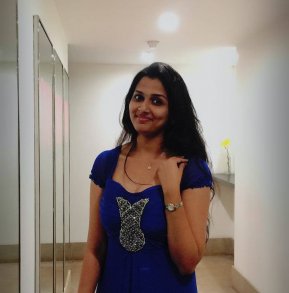
poojaisshining
Copyright · Mutual Consent Divorce · Lawyers · File Caveat in Supreme Court · Privacy · About Us · Terms of Use Legal Services India.com © 2000-2024 · ISBN No: 978-81-928510-1-3
1 Dec 2014 Books/ Book Chapters Burri, Mira
The Protection of Undisclosed Information: Commentary of Article 39 TRIPS
Published in Thomas Cottier and Pierre Véron (eds) Concise International and European IP Law: TRIPS, Paris Convention, European Enforcement and Transfer of Technology (Kluwer Law International, 2014), together with Meitinger.
Share... Share on: ✕

Art Workshops, Classes & Retreats
virtual / online art classes, outside the u.s., within the u.s., all locations.
- Acrylic Painting
- Ceramics & Pottery
- Drawing & Colored Pencils
- Jewelry & Metalsmithing
- Mixed Media & Collage
- Oil Painting
- Photography/ Digital Art
- Printmaking
- Watercolors & Gouache
- Other Media
- Animals & Wildlife
- Art Holidays, Tours & Travel
- Business & Marketing
- Creativity & Style
- Design & Color Theory
- Landscape & Plein Air
- Portrait, Figure & Anatomy
- Still Lifes & Flowers
- Youth Art Classes
All Media/ All Themes
Mariette Egreteau Martelli was born in France but now lives in Arezzo, where she has been a teacher for more than thirty years. She has a scientific background and has always been interested in the link between science and art, with her curiosity fully satisfied in the spectacle offered by nature. Light playing on ordinary objects, and the transparency of sky and water are her favourite subjects. She mostly uses watercolour to express herself, for its immediacy and union between water and light. She is bilingual in French and Italian and fluent in English. Location: Assisi, Italy Instructor: Mariette Egreteau Martelli Cost: 2600 € Sponsor: Schola Artis Pro Vobis Website , email

Just imagine….200 year old olive trees, charming hilltop villages, bustling outdoor cafés and window boxes overflowing with colorful flowers. Now, put yourself in the picture, sitting at a little café with your sketchbook and paints, sketching a window across the way, with its lace curtains, blue shutters, and red geraniums. Can you see it? Can you feel it? Well, why not experience it? Join me for an unforgettable painting holiday in Provence, a region famous for its stunning scenery and clear light which has captivated artists through the centuries. In this week-long workshop, we’ll relax and enjoy long autumn days sketching in this stunningly beautiful part of France. Capture once-in-a-lifetime experiences on the pages of your watercolor journals! Location: Fontaine de Vaucluse, France Instructor: Leslie Fehling Cost: $3,990 Sponsor: French Escapade Website , email , 510-483-5713

This pastel workshop is designed for the beginning and intermediate pastelist and will cover materials, basic design, color, and application. Some materials will be supplied. We will be painting from life and photographs taken on-site or in the surrounding areas of Umbria, the Green Heart of Italy. This is a great opportunity to learn the fundamentals of pastel painting as well as providing a challenge to those who already have a basic understanding of pastel technique. Expect plenty of encouragement and actionable advice. Enjoy a beautiful location with magnificent views and a special atmosphere that only Umbria can offer. Location: Assisi, Italy Instructor: Neva Rossi Smoll Cost: 2600 € Sponsor: Schola Artis Pro Vobis Website , email

Sicily – It's on everyone's bucket list, with colorful sunsets, olive groves, vineyards, and picturesque villages with narrow streets, a never ending range of restaurants and cafés, blue skies and beautiful nature, it’s a painters paradise… And it will be our home for 7 days. The workshop is hosted by the retreat center Salinara. Our daily watercolor routine will include daily demonstrations by Gary, along with time for individual instruction. Afternoons will vary between painting time, exploring the region on your own, or possible one of the many activities offered through Salinara – on designated days Gary will conduct group critique over cocktails before the evening meal. Location: Marsala, Sicily, Italy Instructor: Gary Tucker Cost: From 2300 $ Sponsor: Salinara - Art Farm | Retreat Centre Website , email

We will be a lovely small group where I can work with you individually to ensure that every aspect of the experience meets your expectations. There will be plenty of opportunity to have your questions answered and have fun along the way. I will show you how to make fast improvements by sharing my most successful tips for watercolour sketching. You will receive plenty of demonstrations and examples to support you along the way. Learn how to sketch confidently, understand paint consistency and application and mix wonderful glowing colours! The subjects covered will be truly inspirational – including beautiful beaches, cliffs, boats, botanical garden, local scenes and sketching the everyday such as your lunch. Location: Costa Brava/Barcelona, Spain Instructor: Judy Salleh Cost: $3,790 Sponsor: French Escapade Website , email , 510-483-5713

Keiko Tanabe is a Japanese contemporary artist who has won multiple awards. We are so proud that she’s coming to SALINARA for the fourth time. Come to enjoy a masterful tuition by Keiko Tanabe. Subject matters will be landscape, Mediterranean seascape, old historic city scape, and indoor locations in the authentic 18th century farmhouse where the participants will stay. Sicily is like a dream, colorful sunset, olive groves, lined vineyards, picturesque villages with narrow streets, churches, a never ending range of restaurants and cafés, blue skies and beautiful nature, jovial, kind and friendly people, traditional foods and great local wine. Art, mixture of history and culture, nature create a unique atmosphere and stimulate your creativity. Limited single rooms for a supplement. Location: Marsala, Sicily, Italy Instructor: Keiko Tanabe Cost: From € 2050 Sponsor: Salinara - Art Farm | Retreat Centre Website , email

A Sketchbook Journaling Workshop with Karen Ramsay. Come join us and capture Mallorca in watercolor! As we fill our art travel journals with sketching and watercolors, Karen will give us tips and tricks for improving this special skill. Sketching on location, while traveling, is an art form that you can take with you on every future trip. The daily sketches that you create will become a treasured visual diary of your travel. During this week in Mallorca, we will explore the island, its many scenic areas - from the gorgeous views over the Mediterranean Sea to the small towns in the Tramuntana mountain range: the artist town of Deia, the scenic towns of Fornalutx and Valldemossa and the capital Palma. Location: Valldemossa, Mallorca, Spain Instructor: Karen Ramsay Cost: $3,890 Sponsor: Alpine Creative Tours Website , email , 970-846-9000

5-day Plein Air Event will be an artist's oasis of cotton fields, pine forest, ponds, moss-covered oaks, and historic streets of downtown Thomasville. Join award-winning artists Mary O Smith, Steven Walker, Orit Reuben, Phil Sandusky, Craig Reynolds and Paul Ladnier for an opportunity to learn from these exceptional artists and access beautiful locations. $75 Registration ($70 for members) includes: Inclusion in 2-day Plein Air Exhibition at the Covey Nest, Thomasville, GA. Inclusion in “Wet Paint” show in Boston, GA. Commission is 35% (30% for members). Inclusion in “Quick Draw” paint out, judged by our Featured Artists. People’s Choice: $300, Quickdraw: 1st place $250, 2nd place $200, 3rd place $150, Invitation to private Welcome Dinner. Location: Thomasville, Georgia Instructor: Various Cost: $75 Sponsor: Pines & Palms, the Georgia/Florida Artist Association, Website , email , 229-264-2069

A thought-provoking and inspirational art workshop open to artists of all levels and media (oils, acrylics, watercolors). Nine full days of plein air painting, art history/theory lectures, touring, and gastronomy in the most beautiful area of Tuscany. Our teaching approach and groups limited to eight participants allow us to offer personalized instruction and a stimulating learning environment. Cost of CAD 3975 (around US$ 3000) includes instruction, 9-night accommodation in single and double rooms (limited single rooms available at no extra cost), all breakfasts, 7 lunches, 9 gourmet dinners including wine, transportation from and to the Arezzo train station, transportation to all painting sites (Montepulciano, Cortona, Pienza, etc.), train ticket to Florence, and a tour to the Uffizi Museum. Location: Lucignano, Tuscany, Italy Instructor: Prof. Yves M. Larocque Cost: US$ 3000 Sponsor: Walk the Arts Website , email , 800-611-4789

5-star Painting and Cultural Cruise - Italian Riviera and France! 9 nights: from Barcelona to Rome. All Mediums | All Levels | Non-Painters | Independent Painters. Welcome to our exciting painting cruise across three countries! Embark on an extraordinary 5-star Mediterranean cruise, an artistic journey that unfolds from Barcelona to Rome. This luxurious voyage includes enchanting stops along the picturesque Italian Riviera and captivating destinations in France. As you sail through azure waters and experience the opulence of a 5-star cruise, immerse yourself in unique painting adventures at each port of call. Ports of Call: Barcelona, Marseille (Provence), Nice, Santa Margherita (Portofino), La Spezia (Cinque Terre, Florence, Pisa), Naples and Rome. Location: Mediterranean Cruise, Italy Instructor: Vladislav Yeliseyev Cost: see website Sponsor: Renaissance School of Art Website , email , 941-330-6865

5-star Painting and Cultural Cruise - Italian Riviera and France! 9 nights: from Barcelona to Rome. All Mediums | All Levels | Non-Painters | Independent Painters. Welcome to our exciting painting cruise across three countries! Embark on an extraordinary 5-star Mediterranean cruise, an artistic journey that unfolds from Barcelona to Rome. This luxurious voyage includes enchanting stops along the picturesque Italian Riviera and captivating destinations in France. As you sail through azure waters and experience the opulence of a 5-star cruise, immerse yourself in unique painting adventures at each port of call. Ports of Call: Barcelona, Marseille (Provence), Nice, Santa Margherita (Portofino), La Spezia (Cinque Terre, Florence, Pisa), Naples and Rome. Location: Mediterranean Cruise, France Instructor: Vladislav Yeliseyev Cost: see website Sponsor: Renaissance School of Art Website , email , 941-330-6865
5-star Painting and Cultural Cruise - Italian Riviera and France! 9 nights: from Barcelona to Rome. All Mediums | All Levels | Non-Painters | Independent Painters. Welcome to our exciting painting cruise across three countries! Embark on an extraordinary 5-star Mediterranean cruise, an artistic journey that unfolds from Barcelona to Rome. This luxurious voyage includes enchanting stops along the picturesque Italian Riviera and captivating destinations in France. As you sail through azure waters and experience the opulence of a 5-star cruise, immerse yourself in unique painting adventures at each port of call. Ports of Call: Barcelona, Marseille (Provence), Nice, Santa Margherita (Portofino), La Spezia (Cinque Terre, Florence, Pisa), Naples and Rome. Location: Mediterranean Cruise, Spain Instructor: Vladislav Yeliseyev Cost: see website Sponsor: Renaissance School of Art Website , email , 941-330-6865

Urban sketching is a skill anybody can learn! It will change the way you perceive the world. Whether you are a novice or a sketcher who feels they can do better, this workshop is for you. The focus is on black and white. It is the foundation of all sketching styles. Build confidence and practice urban sketching to capture the essence of the place by learning: What to look for, How to start the sketch, How to simplify the busy surroundings. Your Facilitator: Cristiana Mar is an experienced artist, architect, and educator, teaching adults, leading workshops in US and Mexico since 1989. Our location is Guanajuato, World Heritage city, the capital of Guanajuato state. Location: Guanajuato, Mexico Instructor: Cristiana Mar Cost: $500.00 Sponsor: Cristi Fer Art Website , email , 322-153-1906

Join us for a plein air watercolour painting retreat in delightful and peaceful West-Sicily with Polish watercolorist Michal Jasiewicz. We are so proud that he’s coming to SALINARA for the second time. Michal will be your tutor during your stay at the stunning Salinara Art Farm, in the Trapani region. Daily painting excursions to surrounding salt pans, local markets, vineyards, villages such as the medieval town Erice, and Archeological Park of Selinunte, one of the most flourishing classical civilizations of the Mediterranean area. The workshop will take you through selecting a dramatic composition and simplifying it, tone, light, color theory, effects and how to build up a watercolour painting in a structured, demonstration-led setting. Limited single rooms for a supplement. Location: Marsala, Sicily, Italy Instructor: Michal Jasiewicz Cost: From € 1750 Sponsor: Salinara - Art Farm | Retreat Centre Website , email

Join the 2024 Venice Biennale and Istanbul Biennial Art Tour, a unique 9-night art history trip in Italy and Turkey open to everyone, from artists and art lovers to students and lifelong learners. The cost of CAD $ 4 570 (around US$ 3420) includes 9-night double accommodation in well-rated and centrally located hotels in Venice and Istanbul; daily breakfast, group transportation to the sites on schedule (vaporetto, taxi, bus, ferry), flight from Venice to Istanbul, daily discovery walks in Venice and Istanbul, two-day entrance to the Venice Biennale and the Istanbul Biennial, entrances to the Hagia Sophia, the Topkapi Palace, and the Blue Mosque, and the constant service of an art historian guide and a logistics responsible. Location: Venice, Italy Instructor: Prof. Yves M. Larocque Cost: US$ 3420 Sponsor: Walk the Arts Website , email , 800-611-4789

Join the 2024 Venice Biennale and Istanbul Biennial Art Tour, a unique 9-night art history trip in Italy and Turkey open to everyone, from artists and art lovers to students and lifelong learners. The cost of CAD $ 4 570 (around US$ 3420) includes 9-night double accommodation in well-rated and centrally located hotels in Venice and Istanbul; daily breakfast, group transportation to the sites on schedule (vaporetto, taxi, bus, ferry), flight from Venice to Istanbul, daily discovery walks in Venice and Istanbul, two-day entrance to the Venice Biennale and the Istanbul Biennial, entrances to the Hagia Sophia, the Topkapi Palace, and the Blue Mosque, and the constant service of an art historian guide and a logistics responsible. Location: Istanbul, Turkey Instructor: Prof. Yves M. Larocque Cost: US$ 3420 Sponsor: Walk the Arts Website , email , 800-611-4789
Introducing history of art in Umbria – journey among the wonder. Day 1 Assisi – before and after Giotto: Cimabue and Pietro Cavallini. Investigation around art changings through the XIII century. Day 2 Spoleto – Alberto Sotio: unique XII century school of art in remote Umbria, how byzantine influences have produced masterpieces. Day 3 Montefalco – Benozzo Gozzoli: a piece of Florence in Umbria. Spello – Pinturicchio: artist of the most reach XVth century courts of Italian Renaissance. Day 4 Orvieto – From ‘300 to ‘500: three centuries in a single masterpiece, the Duomo of Orvieto and the ‘Fabrica’. Day 5 Perugia – briefing up: Galleria Nazionale dell’Umbria, eight centuries of History of Art in Umbria in one place. Location: Assisi, Italy Instructor: Irene Maturi Cost: € 2600 Sponsor: Schola Artis Pro Vobis Website , email

Join us for an unforgettable painting tour in the enchanting city of Venice, designed for those who appreciate the finer things in life. Our tour offers luxurious accommodations, daily painting sessions, exquisite cuisine, and cultural experiences, all within a small, intimate group setting that feels like family. Each day includes demonstrations and personalized one-on-one instructions led by the renowned artist Vlad Yeliseyev, allowing you to enhance your skills while capturing the breathtaking scenes of this iconic city. Location: Venice, Italy Instructor: Vladislav Yeliseyev Sponsor: Renaissance School of Art Website , email , 941-330-6865

Granada in the south of Spain is one of the most exciting, different, and welcoming cities I know. So much is going on there in the culture historically and present. We will work mostly in our sketchbooks and Journals during our week in Granada. Moving around with only a backpack and light stools will be easier. We’ll be sketching alleys and mountains, the old casbah, and the famous Alhambra from inside and its surroundings—Flamenco performances in local bars, also gardens, and urban views. We will stay in beautiful accommodation in the heart of the old city, and from there we will have access to our sketching adventure. Location: Granada, Spain Instructor: Tali Farchi Cost: €2900 Sponsor: Artist Table Website , email , +31 6 24903316

Experience a hands-on, deep dive into the authentic traditions of Day of the Dead. Start with a visit to a local mercado for altar decorations & offerings. Then spend your days painting imagery & symbolic representations of loved ones in watercolor to honor their memories, assemble a beautiful group altar, construct & decorate a traditional sand tapestry. Visit two cemeteries where Oaxaqueños lovingly adorn the graves of their ancestors & bring offerings to share with their spirits. Participate in a comparsa - the traditional Muertos parade. Field trips include artisan studio visits: tapetes (woven wool rugs), alebrijes (carved wooden objects), and women's red clay collective (who will invite us to see their own gorgeous Muertos altar). Location: Oaxaca, Mexico Instructor: Pedro Cruz Pacheco + Corrie McCluskey Cost: $2200 (lodging included) Sponsor: Oaxaca Dreams / Talismán Oaxaca Website , email , 707-327-2747

We invite you to join us in this relaxed, beautiful, historic place. Give yourself this time and space to joyfully become a better painter! The setting of Salinara, with its rustic beauty, farm fresh meals, and interesting excursions provides the perfect environment for our “Spirit,Mind,Body” experience. Your artistic SPIRIT will be recognized, encouraged, and celebrated as you work with other creative participants. Your MIND will be engaged by discussions of Art within the group, and your problem solving skills will be challenged as you are improving your painting ability. Your BODY will be nourished with fresh food, walks, biking, and yoga sessions. The emphasis on this workshop is to help promote skill-building with your painting, regardless of your level. Location: Marsala, Sicily, Italy Instructor: Qiang Huang and Suzanne Enriquez Dougher Cost: From 2000 $ Sponsor: Salinara - Art Farm | Retreat Centre Website , email

Join our unique art workshop in South America and experience the stunning Caribbean coast from Puerto Colombia (Barranquilla) to Cartagena. Learn perspective drawing and the fundamentals of watercolors and taste the best of Colombian Caribbean food and culture. After an art class, try a "mojarra con arroz con coco" with a cold Colombian beer. Sketch on the beach, attend cooking demonstrations by local chefs, join a street food tour, and more. The price of CAD 3050 per person (around US$2250) includes eight-night double accommodation in well rated hotels, all ground transportation, all breakfasts, one lunch, two suppers, one street food tour, art instruction, cooking presentations, art supplies, and more. Single rooms available for CAD 810 (around US$ 600). Location: Cartagena, Colombia Instructor: Prof. Yves M. Larocque Cost: US$2250 Sponsor: Walk the Arts Website , email , 800-611-4789

Need to feed your creative soul? Fill it to the brim with creative transformation and fresh inspiration. We'll mix art class - watercolor, natural pigments, mixed media/collage - with carefully curated field trips in magical Oaxaca: a traditional Carnaval celebration featuring La Danza de Los Diabilitos (Dance of the Devils) the Tuesday before Lent begins, a massive Zapotec Sunday market, a studio visit with a master mask maker where we'll paint our own masks, a master alebrije (wooden carved figures) family studio, a papermaking studio using local natural fibers, a gorgeous art center housed in a renovated textile factory, and a guided street art walk in a hip barrio - all mixed in with art instruction and creative play time. Location: Oaxaca, Mexico Instructor: Pedro Cruz Pacheco + Corrie McCluskey Cost: $2595 (includes lodging) Sponsor: Talismán Oaxaca / Oaxaca Dreams Website , email , 707-327-2747

A fun and flexible bus art tour to New York City from Ottawa offered since 1993. Three nights and four days in Midtown Manhattan visiting the Met, the MoMa, the Guggenheim, the Whitney, the Chelsea Galleries and more. A great opportunity to travel with a group of art lovers and an art historian on board. Participants from all over the US can join us in NYC. Price per person in a double room is CAD 1000 (around US$730 at the current exchange rate). We also offer single, triple and quad accommodation. Price includes three nights at a well-rated hotel in Midtown Manhattan, deluxe bus transportation Ottawa-New York -Ottawa and transportation to all museums and galleries on schedule. Location: New York City, New York Instructor: Prof. Yves M. Larocque Cost: US$ 730 Sponsor: Walk the Arts Website , email , 800-611-4789

Amit Kapoor is a leading master of watercolor in India. Join us for a unique and exceptional watercolor painting workshop in Sicily with the Indian artist Amit Kapoor. It’s a beautiful opportunity for you to live and paint with a master artist in an authentic Sicilian farmhouse located just 500 m from the Mediterranean sea. Participants will learn Amit’s techniques and process to paint Plein-Air and in studio, how to be expressive with bold brush strokes and colourful palette. Limited single rooms for a supplement. Location: Marsala, Sicily, Italy Instructor: Amit Kapoor Cost: From € 2150 Sponsor: Salinara - Art Farm | Retreat Centre Website , email

Join me for 4 days of sketching with watercolor in beautiful Sonoma. We’ll enjoy the free-flowing and colorful nature of watercolor at its best while sketching and having fun! I’ll help you develop observation skills, color awareness, simple design principles and learn about light and shadows. We’ll investigate various techniques, sketching tools, and approaches to watercolor. Enjoy time with fellow artists, instruction and friendly critiques. Location: Sonoma, California Instructor: Brenda Swenson Cost: $1,590 Sponsor: French Escapade Website , email , 510-483-5713

A Watercolor Painting Workshop with Anita Winter. Known all over the world for its beauty, Provence is the artist's dream destination. Anita Winter will lead a group of watercolor painters on this painting adventure. During the days, we will explore Luberon, and its spectacular countryside of vineyards and orchards, fascinating "perched" hill-top villages, outstanding natural produce and the light of Van Gogh and Cezanne. You will soon see why artists of all calibers are drawn to this alluring area. Location: Bonnieux, Provence, France Instructor: Anita Winter Cost: $3,890 Sponsor: Alpine Creative Tours Website , email , 970-846-9000

Come and paint in beautiful Santa Fe! Carol Carter will share her unique watercolor technique, painting from background to foreground, using dynamic and inventive color. We will begin each day in the studio with a watercolor tutorial where Carol will share her watercolor techniques. The workshop will provide templates, reference photos and materials information. The session will conclude with a small critique around 4pm. At the end of the day, we will walk the beautiful downtown of Santa Fe for some museums visit, wine tasting, photography, sketching, and of course we will give you free time for shopping. Relax, enjoy, learn a new watercolor technique or two among the camaraderie of other artists while savoring great local food. Location: Santa Fe, New Mexico Instructor: Carol Carter Cost: $1,690 Sponsor: French Escapade Website , email , 510-483-5713

Join me in Carmel and Pacific Grove, where we’ll experience the wild beauty of rugged Pacific shores, the enchanting fairy-tale cottages, and historic Mission architecture that make this place so unique. I’ve designed this workshop to give you confidence sketching wherever you happen to be. I’ll show you how to keep your watercolour sketches loose, fresh and vibrant. And I’ll share my techniques for capturing the beauty that surrounds us, so you can savour it for years to come. Location: Carmel, California Instructor: David Daniels Cost: $3,790 before Nov 30th Sponsor: French Escapade Website , email , 510-483-5713

I am so excited to teach you in this inspiring place while working outdoors in Plein Air as the Impressionist masters did! Paint the crystal blue Mediterranean waters with breathtaking vistas of the Catalonia coast, a hidden gem fishing village, botanical gardens, and medieval villages. As a painter and colorist, I have learned that the best way to achieve the feeling of light and color in your paintings is to paint outdoors. I will be your guide and teacher for an incredible week of painting, sightseeing, dining, and artistic community while we all learn and grow our artistry during the week. The experience of painting with other artists will be a treasure you carry with you for a lifetime. Location: Costa Brava, Spain Instructor: Rose Irelan Cost: $3,790 before Nov 30th Sponsor: French Escapade Website , email , 510-483-5713

Join me for an amazing week of plein air painting in magnificent Provence, France! This is ‘Red poppy season’ and we’ll explore and paint the exciting spring colors of glorious Provence. I’m super excited to teach you painting in such an inspiring place! We’ll paint flower fields, countryside villages, waterways and hillside castle towns, quaint, flower-filled alleyways, medieval churches, fountains and ancient archways. We’ll paint our impressions, dine exquisitely, share gorgeous sights and creative companionship, all while learning and growing our craft. I will share my methods for creating successful paintings with loose brushwork and exciting color harmonies. I will demo in oil and watercolor, but am proficient and happy to help with acrylics and pastels as well. Location: Provence, France Instructor: Maggie Hellmann Cost: $3,940 before Nov 30th Sponsor: French Escapade Website , email , 510-483-5713

We explore the dramatic landscape of Doolin, County Clare, Ireland and translate its landscape, energy and lore into visual artwork. Our time together will be a balance between group excursions, individual exploration, and creation coupled with sharing and diving deeper into technique. We will establish a shared studio space as a center of operation as artists of any level work together in their preferred Media. Included in the retreat are 4 art workshops with Martin Bridge; field trips; 2 meals/day; housing and publication in an anthology of creativity (subject to vetting)—join us for this retreat of like-minded individuals connecting in various ways to the land in this very special place. Location: Doolin, Ireland Instructor: Martin Bridge Cost: $1500-$2500 depending on accommodations Sponsor: NatureCulture, and The Milk House Website , email , 413-475-0650

You probably fell in love with making art before a painting holiday occurred to you. Classroom lessons, online sessions, or time in the studio are typically safe environments in which to learn. But once we venture outdoors to paint, the light can be dramatic, the air is filled with sights, sounds, and smells of nature. While this can all be new, it enriches the painting experience even more. When we arrive on the Costa Brava, my job is to help you capture the nuances of our surroundings with confidence. Even before departure I’ll provide practical pointers on what to bring, what to leave behind. My plein-air workshops are jam-packed with helpful tips to help you make powerful statements through your art. Location: Costa Brava, Spain Instructor: Randy Hale Cost: $3,790 before Nov 30th Sponsor: French Escapade Website , email , 510-483-5713

The Lake Como Experience - A Plein Air Watercolor Painting Workshop with Kathleen Lanzoni. Join us in Bellagio in 2025, as Kathleen Lanzoni takes a group of watercolor painters on this trip to northern Italy. During the week, this tour is designed to guide you to the finest spots along the shores of the picturesque Lake Como with its charming lakeside towns, its Renaissance architecture, Italian villas and terraced gardens. Daily we will plein air paint the beautiful towns, the lake scenes and the surrounding scenery. You will receive personal painting instruction each day. Whether you are a novice or experienced painter, this trip will be fun and an educational experience for all! Location: Bellagio, Lake Como, Italy Instructor: Kathleen Lanzoni Cost: $3,990 Sponsor: Alpine Creative Tours Website , email , 970-846-9000

Join me for one week of sketching with watercolor in beautiful Provence! Drawing while traveling is the best way to experience and remember a new place. Traveling is also a perfect opportunity to learn or hone your drawing skills. When we see new sights everything strikes us as unusual, memorable and inspiring. We have a natural desire to admire new vistas, taste new flavors, inhale unusual aromas and record these sensations through taking photos, but also through drawing and writing. For me, drawing while traveling is instinctual, and I am eager to share my passion to fully immerse yourself in a new place through the practice of travel sketching. Location: Provence, France Instructor: Rita Sabler Cost: $3,940 before Nov 30th Sponsor: French Escapade Website , email , 510-483-5713

A Sketchbook Journaling Workshop with Karen Ramsay. Widely considered one of the prettiest areas of Europe, the Italian Lakes were once a playground for nobility and royals, visible in the many palaces dotting the lake shores. We will be staying in the beautiful town of Bellagio, often called "the Pearl of Lake Como", situated by the foothills of the Swiss and Italian Alps. During the week, this tour is designed to guide you to the finest spots along the shores of the picturesque Lake Como with its charming lakeside towns, its Renaissance architecture, Italian villas and terraced gardens. The Italian Lakes region has a mesmerizing, timeless beauty where we will find endless inspiration to design, generate and create art. Location: Bellagio, Italy Instructor: Karen Ramsay Cost: $3,990 Sponsor: Alpine Creative Tours Website , email , 970-846-9000

The wonderful views and landscapes of the French Alps seem to be just made for watercolor. All the incredible villages, lakes and mountains are just begging to be caught on the tip of your brush. Moving from place to place, we will find the best locations to create vibrant and sunny watercolors. Every day will be a discovery for you—and a new opportunity for painting in watercolor. In addition to traditional watercolor techniques, I will introduce you to my personal methods and secrets. Join us for relaxation and enjoyment of the French Alps with a very rich and informative workshop in the open air. Location: Haute-Savoie, France Instructor: Shari Blaukopf Cost: $3,840 before Nov 30 Sponsor: French Escapade Website , email , 510-483-5713

Join acclaimed watercolorist and instructor, Margie Samuels, for a magical week of painting in beautiful Provence! Each day will start with a short morning lesson, reviewing the watercolor skills that you will be using in that day’s landscape. These lessons will focus on the specific techniques that you’ll need to take your painting to the next level, including: Creating Stronger Compositions; Putting Depth in Your Paintings (with Perspective); Employing Thoughtful Color Mixing; Painting People into your Landscapes for Interest and Movement. This workshop caters to all skill levels, focusing on foundational techniques. Whether you are a beginner or experienced, my goal is to equip you with the skills for creating vibrant paintings! Location: Provence, France Instructor: Margie Samuels Cost: $3,940 Sponsor: French Escapade Website , email , 510-483-5713

A thought-provoking and inspirational art workshop open to artists of all levels and media (oils, acrylics, watercolors, etc.). Nine full days of plein air painting, art history/theory lectures, touring, and gastronomy in the most beautiful area of Tuscany. Our teaching approach and groups limited to eight participants allow us to offer personalized instruction and a stimulating environment that fosters creativity. Cost of CAD 4175 (around US$ 3050) includes instruction, 9-night single or double accommodation (limited single rooms available at no extra cost), all breakfasts, 7 lunches, 9 gourmet dinners including wine, transportation from and to the Arezzo train station, transportation to all painting sites (Montepulciano, Cortona, Pienza, etc.), train ticket to Florence, and a guided tour to the Uffizi Museum. Location: Lucignano, Italy Instructor: Prof. Yves M. Larocque Cost: US$3050 Sponsor: Walk the Arts Website , email , 800-611-4789

Do you want to learn how to capture the spirit of Costa Brava in paint? Here’s your chance! Join plein air and gouache painting veteran Judd Mercer in northeastern Spain for a whirlwind tour of one of the world’s most idyllic coasts. Along the way, you’ll learn the power and portability of gouache, a fantastic medium for capturing the landscape no matter where you are in the world. Watercolorists, oil and acrylic painters, and urban sketchers alike will learn to use the speed and versatility of gouache to capture ideas quickly for plein air work (or studio use later). Each day will feature two demos (morning/afternoon) and emphasize different plein air and gouache techniques. Location: Costa Brava, Spain Instructor: Judd Mercer Cost: $3,940 before Nov 30th Sponsor: French Escapade Website , email , 510-483-5713

Join me for a week in Provence, where we will spend our week traveling and sketching and capturing all our experiences in our sketchbook. We will sometimes sketch quick vignettes on the go, and at other times, we will paint more immersive panoramas where we slow down to capture the essence of place in a single piece. Our travels will take us to beautiful riverside villages, lavender fields, cliffs of ochre and gardens where Van Gogh sketched. There will be markets and town squares to draw in and gourmet food to enjoy and capture in our sketches. All in all, you are promised a week filled with rich experiences and lots of art tips to up your travel-sketching game! Location: Provence, France Instructor: Suhita Shirodkar Cost: $3,940 before Nov 30th Sponsor: French Escapade Website , email , 510-483-5713

The unique aspect of this tour is the opportunity to explore two incredible countries in a single trip, witnessing the diversity of landscapes, architecture, and culture as you hop between the Netherlands and Belgium. You'll be guided by our knowledgeable instructor, Vlad, along with wonderful local guides. Are you ready to embark on a journey that combines art, history, delicious cuisine, and unforgettable camaraderie? Look no further! Vlad's Painting and Cultural Tour in the Netherlands and Belgium promises to be the highlight of your summer. We invite you to check out the itinerary for this trip to explore the exciting activities and destinations we have planned. Location: Bruges & Ghent, Belgium Instructor: Vladislav Yeliseyev Cost: $3,950.00 Sponsor: Renaissance School of Art Website , email , 941-330-6865

The unique aspect of this tour is the opportunity to explore two incredible countries in a single trip, witnessing the diversity of landscapes, architecture, and culture as you hop between the Netherlands and Belgium. You'll be guided by our knowledgeable instructor, Vlad, along with wonderful local guides. Are you ready to embark on a journey that combines art, history, delicious cuisine, and unforgettable camaraderie? Look no further! Vlad's Painting and Cultural Tour in the Netherlands and Belgium promises to be the highlight of your summer. We invite you to check out the itinerary for this trip to explore the exciting activities and destinations we have planned. Location: Leiden, The Netherlands Instructor: Vladislav Yeliseyev Cost: $3,950.00 Sponsor: Renaissance School of Art Website , email , 941-330-6865
While learning the importance of oil painting techniques (values, edges, composition, etc.), the joy of actually painting France en plein air won’t get lost on Kathie! The enthusiasm for painting the mountains, lakes and chalets with you will be contagious! Kathie will walk through her process of narrowing down the choices of subject matter and then demo before it’s time for you to get your brushes wet too… and she will be right alongside cheering you on with personal instruction and encouragement! There is a reason why you want to paint. Kathie will work to help you tap that desire by throwing herself into the entire experience and beauty of the French Alps! Location: Haute-Savoie, France Instructor: Kathie Odom Cost: $3,840 before Nov 30 Sponsor: French Escapade Website , email , 510-483-5713

In this watercolor workshop, I will help you discover new approaches to your works. Values and Color are the two main elements I will focus on and a dramatic sense of design. My personal style is basically a loose and carefree approach. Leaving a lot of the white of the paper, for me, is paramount in my watercolor work. We will work mostly from our own reference photos, in a relaxed studio environment. You can choose which genres best suit your personality - florals, landscapes, structures, etc. Critiques of the work and one-on-one directions will also be a part of this workshop. I hope you will join me in Bruges for this fantastic painting experience. Location: Bruges, Belgium Instructor: Rae Andrews Cost: $3,840 before Nov 30th Sponsor: French Escapade Website , email , 510-483-5713

A unique art workshop/art tour open to artists of all levels and media (oils, acrylics, watercolors, etc.). Seven days of plein-air painting, art history/theory lectures, and gastronomy in the Alpes-de-Haute-Provence followed by four days visiting Barcelona’s top art sites and enjoying Catalan cuisine. The price of CAD 4700 per person (around US$ 3450) includes instruction, 11-night double accommodation, 11 breakfasts, 6 healthy lunches, 6 gourmet dinners including wine, transportation from the Manosque train station to our lodge, transportation to all painting sites, TGV train ticket Avignon-Barcelona, transportation and entrance fees to all sites on schedule (Cézanne’s studio, La Sagrada Familia, Picasso Museum, Miró Museum, etc.). Limited single rooms for a supplement of CAD 875 (around US$ 650). Location: Alpes-de-Haute-Provence & Barcelona, France Instructor: Prof. Yves M. Larocque Cost: US$3450 Sponsor: Walk the Arts Website , email , 800-611-4789

A unique art workshop/art tour open to artists of all levels and media (oils, acrylics, watercolors, etc.). Seven days of plein-air painting, art history/theory lectures, and gastronomy in the Alpes-de-Haute-Provence followed by four days visiting Barcelona’s top art sites and enjoying Catalan cuisine. The price of CAD 4700 per person (around US$ 3450) includes instruction, 11-night double accommodation, 11 breakfasts, 6 healthy lunches, 6 gourmet dinners including wine, transportation from the Manosque train station to our lodge, transportation to all painting sites,TGV train ticket Avignon-Barcelona, transportation and entrance fees to all sites on schedule (Cézanne’s studio, La Sagrada Familia, Picasso Museum, Miró Museum, etc.). Limited single rooms for a supplement of CAD 875 (around US$ 650), Location: Alpes-de-Haute-Provence & Barcelona, Spain Instructor: Prof. Yves M. Larocque Cost: US$3450 Sponsor: Walk the Arts Website , email , 800-611-4789
While learning the importance of oil painting techniques (values, edges, composition, etc.), the joy of actually painting Belgium en plein air won’t get lost on Kathie! The enthusiasm for painting medieval architecture and windmills with you will be contagious! Kathie will walk through her process of narrowing down the choices of subject matter and then demo before it’s time for you to get your brushes wet too… and she be right alongside cheering you on with personal instruction and encouragement! There is a reason why you want to paint. Kathie will work to help you tap that desire by throwing herself into the entire experience and beauty of this amazing city of Bruges! Location: Bruges, Belgium Instructor: Kathie Odom Cost: $3,840 before Nov 30th Sponsor: French Escapade Website , email , 510-483-5713

Join Cindy Briggs and Theresa Goesling in Bruges, Belgium and have a creative life experience. You’ll enjoy inspiring locations such as canals, wind mills, Flemish architecture, daily painting demonstrations, personalized instruction, and encouraging support from Cindy and Theresa. “We show you how to simplify and design your subject, draw confidently, jazz up your colors, paint with serendipity and experiment with new techniques. Create colorful paintings en Plein Air with an emphasis on celebrating your own unique point of view”. Location: Bruges, Belgium Instructor: Cindy Briggs & Theresa Goesling Cost: $3,840 before Jan 31 Sponsor: French Escapade Website , email , 510-483-5713

Join me for an unforgettable painting holiday in Giverny, a strikingly beautiful part of France famous for its stunning scenery and captivating light. We’ll have plenty of time to capture once-in-a-lifetime experiences on the pages of our watercolor journals. You’ll learn how to add style and interest to your sketchbook pages through the use of unique page layouts and borders, and we’ll cover several fun new lettering styles. In addition, I’ll offer daily demonstrations of techniques for painting the subject matter you’ll encounter each day. And you’ll be painting right along with me, since we learn more by doing than by simply observing. The workshop is suitable for all levels, but some experience with drawing and watercolor would be helpful. Location: Giverny, France Instructor: Leslie Fehling Cost: $3,840 before Jan 31 Sponsor: French Escapade Website , email , 510-483-5713

Join Cindy Briggs and Theresa Goesling in the French Alps and have a creative life experience. You’ll enjoy inspiring locations such as mountains, lakes, chalets, meadows, daily painting demonstrations, personalized instruction, and encouraging support from Cindy and Theresa. “We show you how to simplify and design your subject, draw confidently, jazz up your colors, paint with serendipity and experiment with new techniques. Create colorful paintings en Plein Air with an emphasis on celebrating your own unique point of view”. Location: Haute-Savoie, France Instructor: Cindy Briggs & Theresa Goesling Cost: $3,840 before Jan 31 Sponsor: French Escapade Website , email , 510-483-5713

Do you struggle to apply watercolour or get overwhelmed sometimes when sketching? I will help solve your problems by showing you how to make fast improvements through sharing my most successful tips with watercolour sketching. You will receive plenty of individual tuition, demonstrations and examples to support you along the way. Return home armed with new skills in watercolour and sketching as you will have learnt how to sketch confidently, understand paint consistency and application and mix wonderful glowing colours to capture the magical scenes of Giverny. I will encourage you to sketch what makes your heart sing! The subjects covered will be truly inspirational – including French buildings, landscapes, local scenes and Monet’s garden! Location: Giverny, France Instructor: Judy Salleh Cost: $3,840 before Jan 31 Sponsor: French Escapade Website , email , 510-483-5713

Experience the Provence region on an immersive artistic journey with Alicia Farris. Alicia adores sharing her passion for watercolor painting and inspires with her creative energy and loose and lively painting style. She feels artists share a special sense for both seeing and feeling their subjects. She helps inspire her students to use color and light to paint a story from their hearts, not merely from what their eyes see. You’ll have the opportunity to watercolor paint, sketch and photograph your way through this spectacular region of Provence. Whether it’s the beautiful gardens, the lovely vistas, colorful markets or the quaint villages that inspire you, Alicia will guide you through the creative process. Location: Provence, France Instructor: Alicia Farris Cost: $3,940 before Jan 31 Sponsor: French Escapade Website , email , 510-483-5713

Come join me for an amazing week of plein air painting in beautiful Provence, France! We will have gorgeous views to paint of cute medieval villages, colorful markets, rivers, olive trees, etc… It is also a place to enjoy gourmet cheese and wine, ratatouille and creme brûlée! You can choose to work with Oil &/or Gouache in this workshop. I will be doing daily demos and assisting you with your paintings. I enjoy teaching and will be there with you to help strengthen your painting skills and artistic voice. We will focus on design, color mixing, and capturing the mood of the day by understanding atmospheric perspective. This workshop is open to beginner and intermediate students. Location: Provence, France Instructor: Ellen Howard Cost: $3,940 before Jan 31 Sponsor: French Escapade Website , email , 510-483-5713

Join Cindy Briggs and Theresa Goesling for their 2nd workshop at the stunning Salinara Art Farm on the west coast of Sicily. Sicily is a unique island that has been shaped by many cultures over many thousands of years. Excursions and painting to surrounding salt pans with colorful sunset, fisherman boats, local markets, picturesque villages with narrow streets, churches, a never ending range of restaurants and cafés, blue skies and beautiful nature, jovial, kind and friendly people, traditional foods and great local wine, medieval hill town of Erice, Archeological Park of Selinunte with Greek temples. And many beaches where we can swim in the blue water of the Mediterranean Sea. Limited single rooms for a supplement. Location: Marsala, Sicily, Italy Instructor: Theresa Goesling and Cindy Briggs Cost: From € 3100 Sponsor: Salinara - Art Farm | Retreat Centre Website , email

Sicily – It's on everyone's bucket list, with colorful sunsets, olive groves, vineyards, and picturesque villages with narrow streets, a never ending range of restaurants and cafés, blue skies and beautiful nature, it’s a painters paradise… And it will be our home for 7 days. The workshop is hosted by the retreat center Salinara. Our daily watercolor routine will include daily demonstrations by Gary, along with time for individual instruction. Afternoons will vary between painting time, exploring the region on your own, or possible one of the many activities offered through Salinara – on designated days Gary will conduct group critique over cocktails before the evening meal. Limited single rooms for a supplement. Location: Marsala, Sicily, Italy Instructor: Gary Tucker Cost: From $2300 Sponsor: Salinara - Art Farm | Retreat Centre Website , email

Ports: Athens, Volos, Istanbul, Ephesus, Rhodes, Santorini, Mykonos. Join our luxurious painting and cultural tour onboard Celebrity Infinity, starting from the historic city of Athens and exploring the stunning Greek islands and Turkey. This journey offers a perfect blend of painting experience lead by award-winning master watercolorist Vladislav Yeliseyev and deep cultural immersion, with private tours ensuring an intimate and enriching experience. This tour is designed for everyone - whether you wish to learn from Vlad, paint independently, or simply enjoy the journey as a non-painter. Immerse yourself in the rich culture, breathtaking scenery, and artistic inspiration that the Mediterranean has to offer. This journey promises not only a lavish vacation but also an unforgettable artistic odyssey around Aegean Sea! Location: Celebrity Cruise, Greece Instructor: Vladislav Yeliseyev Cost: from $4985 Sponsor: Renaissance School of Art Website , email , 941-330-6865

Promote your art workshops, classes & retreats!

Luxury art vacations
Artful Jaunts blend unique art destinations and behind the scenes experiences with luxury accommodations and fine dining to create extraordinary getaways that enrich, educate, and entertain.
Artful Jaunts are typically 3 to 8 days long, for small groups of 12-20 people, and are offered at three levels: Discover (for the emerging collector), Signature (featuring opportunities to meet more established artists) , and Connoisseur (presenting the very finest the art world has to offer) .
Artful Jaunts
2024 trips now open - santa fe , bespoke or museum trip.

Artful FOG Design+Art

LA Frieze Prequel

A Pilgrimage to Marfa
The home of american art, the center of the art world, america's museum redefined, contemporary art in london, contemporary art in paris.

Art in The Hamptons
Art in the hudson valley, land art in the american west, art basel in miami beach, included with all artful jaunts.
- Led by expert art educators and curators
- Private access to collector and studio visits
- Behind the scenes experiences in the art world
- Luxury accommodations, cocktails, and fine dining
- Artful advisory counsel on potential art purchases
- The Artful app
Unlock a world of art experiences
I like art but am not an expert. Will this trip be right for me?
Absolutely. Artful Jaunts are tailored to every level of aficionado—from expert collectors to those just starting out, there's something for everyone.
Where do your guides come from?
Our guides are carefully sourced from the art world. In addition to impressive resumes, they bring engaging personalities and knowledge that help make every trip unforgettable. After our thorough interview process, we invest heavily in training the guides from public speaking to test trips.
Do your guides undergo background checks?
All Artful employees, including our art educators, have passed a third-party background check.
Do I need to purchase art if I go on a trip?
No, no purchase is required. However, with our access to artists' studios and important galleries, you may find yourself tempted.
What additional costs are not included?
Nothing, other than your own incidentals and your airfare. Our founder likes to say you never have to take out your wallet; just enjoy your Jaunt.
I have been involved in art all my life. Will this trip be too basic for me?
Not at all. With experts and curators to guide you, our trips are designed to be educational, engaging, and entertaining, regardless of your level of involvement in the art world.
Are bespoke trip options on offer?
Yes. A great way to explore art is with your extended family or a set of close friends. Choose your group and your date and we'll create your dream trip for you.
Are corporate Jaunts available?
Of course; if so desired, we can arrange custom Jaunts for your firm. Please contact us directly.
What do I need to bring on a Jaunt?
Enthusiasm and a desire to learn and meet new people with similar interests, and have fun. Packing suggestions will be offered based upon the destination.
What if I want to stay longer to do some personal travel?
By all means. Pre- and post-Jaunt travel could be a great way to enhance your trip. We are more than happy to help you extend your hotel with our preferred rate.
Is a Jaunt appropriate for children?
We do not recommend Jaunts for children who are under 21 years old given the social focus on the evening programming. However, a bespoke Jaunt would be a perfect way to create your own experience for family and friends, including children of all ages.

join our Newsletter
Sign up to be the first to hear about our newest Jaunts, and get the latest articles from Artful Magazine
House Republicans chide FBI over 'silence' on Tim Walz's alleged CCP ties: 'Inexcusable'
by JACKSON WALKER | The National Desk

WASHINGTON (TND) — The House Oversight Committee on Thursday condemned the FBI for allegedly refusing to cooperate with the committee’s inquiry into allegations Minnesota Gov. Tim Walz worked with the Chinese Communist Party (CCP).
The committee in August claimed Walz had been to China over 30 times and had been a fellow at a Chinese institution "that maintains a devotion to the CCP." Committee chair Rep. James Comer, R-Ky., demanded FBI Director Christopher Wray submit documents and communications related to conversations between Walz and CCP-connected entities.
In a follow-up letter to Wray Thursday, the representative condemned the FBI for allegedly dodging the inquiry.
“The deadline to produce such documents and information has passed, and the Bureau has failed to provide any response to the Committee,” he wrote. “The FBI’s silence regarding Mr. Walz’s documented relations with CCP affiliates is inexcusable.”
“The FBI told the Committee that the Bureau’s Foreign Influence Task Force investigates this kind of CCP activity,” he added. “The Committee is concerned that Mr. Walz’s involvement with Chinese entities and officials may have allowed the CCP to influence his decision-making as a congressman and governor and potentially would allow the CCP to influence the White House should Mr. Walz be elected vice president.”
READ MORE | Walz admits he misspoke on military record: 'My grammar is not always correct'
Rep. Comer demanded Wray comply with the demands within just seven days.
The National Desk (TND) reached out to the Harris campaign for comment, but did not receive a response prior to publication.
Gov. Walz in August fielded backlash after a video resurfaced showing him praising a a pro-Palestinian Muslim leader. That individual is allegedly responsible for spreading antisemitic content, including a pro-Hitler film.
Follow Jackson Walker on X at @_jlwalker_ for the latest trending national news. Have a news tip? Send it to [email protected].

The Top Art Trips to Italy: A Creative Journey
- Post author: angelo
- Post published: January 5, 2024
- Post category: Italy
Embarking on an art trip to Italy is like stepping into a living canvas, where the rich tapestry of history, culture, and unparalleled artistic heritage unfolds before your eyes. This article delves into the mesmerizing art trips to Italy , guiding you through a journey that intertwines the soul of the Renaissance with contemporary artistic expressions. Italy is a country that continues to captivate travelers with its rich culture, stunning landscapes, and, of course, its incredible art. For art enthusiasts, a trip to Italy is like stepping into a masterpiece itself. The country offers a myriad of art trips, tours, and vacations that allow visitors to immerse themselves in the artistic heritage that spans centuries.
From the magnificent ancient ruins of Rome to the picturesque countryside of Tuscany, each region has its own distinct artistic treasures waiting to be discovered. Whether you’re exploring the Renaissance masterpieces in Florence , the hidden gems of Bologna and Ravenna, or the artistic splendors of Venice and Milan , you’ll find yourself surrounded by beauty and inspiration at every turn.
Indulge your passion for art and embark on an unforgettable creative journey through Italy. Immerse yourself in the diverse art scene of the country, where ancient sculptures, Renaissance masterpieces, and contemporary works coexist harmoniously. Let the enchanting landscapes and vibrant cities of Italy ignite your creativity and leave you with memories that will last a lifetime.
Key Takeaways:
- Italy offers a plethora of art trips and tours.
- Explore the ancient monuments and baroque marvels of Rome.
- Discover the artistic legacy of Florence, the Renaissance capital.
- Uncover the hidden artistic gems of Bologna and Ravenna.
- Admire the artistic splendors of Venice and its unique workshops.

Discovering Rome: Ancient Monuments and Baroque Marvels
Rome is a treasure trove of art, boasting ancient Roman ruins, magnificent churches, and stunning Baroque architecture. A visit to the Eternal City would not be complete without exploring the Roman and Imperial Forums, the Colosseum, the Pantheon, and the Vatican. Art enthusiasts can marvel at renowned masterpieces in museums such as the Vatican Museums, the Borghese Gallery, and the MAXXI Museum of Contemporary Art. Additionally, Rome is home to impressive contemporary architectural works such as the MAXXI designed by Zaha Hadid and the Jubilee Church designed by Richard Meier.
The Renaissance Capital: Florence and its Artistic Heritage
Florence is a haven for art enthusiasts, renowned for its rich artistic heritage from the Renaissance era. As an art lover, I was captivated by the city’s vibrant cultural scene and iconic landmarks that showcase the brilliance of Italian art.
One of the must-visit destinations in Florence is the Uffizi Gallery, home to a remarkable collection of masterpieces by renowned artists such as Botticelli, Leonardo da Vinci, and Raphael. Stepping into the gallery felt like stepping back in time, surrounded by the awe-inspiring beauty of these timeless works of art.
Another highlight of Florence is the Accademia Gallery, where Michelangelo’s magnificent sculpture, David, stands proudly. The sheer talent and artistry that went into creating this masterpiece is truly awe-inspiring, leaving me in complete awe during my visit.
The Pitti Palace is yet another gem in Florence, housing extensive art collections and historic costumes. Exploring the palace felt like stepping into a time capsule, providing a glimpse into the opulence and grandeur of Italy’s past.
But what sets Florence apart is not just its incredible art collections, but also its immersive art experiences. The city offers a range of art workshops and retreats, where visitors can learn traditional art techniques from skilled artisans. These engaging experiences allow art lovers like me to delve deeper into the craftsmanship and artistic processes that have shaped the history of Italian art.
Whether you’re exploring the galleries, admiring the architectural wonders, or participating in art workshops, Florence is a destination that truly embodies the essence of Italy for Art Lovers . The city’s artistic heritage is both inspiring and captivating, leaving a lasting impression on every art enthusiast who visits.

Exploring the Artistic Gems of Bologna and Ravenna
Bologna and Ravenna may not be as well-known as Rome and Florence, but they are hidden gems when it comes to art and culture. The cities of Bologna and Ravenna offer a unique artistic experience that is sure to captivate art lovers.
In Bologna, visitors can immerse themselves in the city’s medieval architecture, vibrant art scene, and delectable traditional Italian cuisine. The Museo del Bargello is a must-visit, showcasing a diverse collection of art treasures. The highlight of Bologna’s art scene, however, lies in the stunning frescoes adorning the Basilica di San Petronio. These vibrant works of art provide a glimpse into the rich history and artistic heritage of the city.
“Bologna is not only a gastronomic destination but also a cultural capital with a multitude of artistic treasures waiting to be discovered.”
Ravenna, on the other hand, is famous for its Byzantine mosaics that adorn its historic sites. The mesmerizing mosaics in the Mausoleum of Galla Placidia and the Basilica di San Vitale are a testament to the city’s artistic legacy. Exploring Ravenna’s art is like stepping back in time, as these intricate mosaics tell stories of emperors, saints, and mythical creatures.
Both Bologna and Ravenna offer art tours and experiences that provide visitors with unique perspectives on their art heritage. These tours allow art enthusiasts to delve deeper into the history, techniques, and significance behind the artworks, creating a truly immersive art vacation in Italy .
Bologna and Ravenna Highlights:
- Vibrant art scene in Bologna
- Museo del Bargello in Bologna
- Frescoes in the Basilica di San Petronio
- Byzantine mosaics in Ravenna
- Mausoleum of Galla Placidia and Basilica di San Vitale in Ravenna
- Art tours and experiences in both cities
For art lovers seeking a unique and off-the-beaten-path art immersion in Italy , a visit to Bologna and Ravenna is a must. Discover the hidden artistic gems of these captivating cities and experience the rich cultural heritage they have to offer.

Venice and its Artistic Splendors
Venice is a city that breathes art and beauty at every corner. The iconic canals, charming squares, and impressive palaces provide a stunning backdrop for artistic exploration.
Visitors to Venice have the opportunity to admire exquisite artworks in some of the city’s renowned galleries and museums. The Gallerie dell’Accademia showcases a magnificent collection of Venetian art, including works by Titian, Tintoretto, and Giorgione. The Peggy Guggenheim Collection offers a unique selection of modern and contemporary art, featuring masterpieces by Picasso, Pollock, and Dalí. At the Palazzo Grassi , visitors can experience thought-provoking exhibitions from internationally acclaimed artists.
One of the highlights of the art calendar in Venice is the Biennale di Venezia , an international art exhibition held every two years. This prestigious event attracts artists, curators, and art enthusiasts from around the world. The Biennale showcases a diverse range of contemporary art, reflecting global perspectives and stimulating critical discourse.
In addition to these world-class art institutions and events, Venice offers unique experiences for art enthusiasts, such as art workshops. These workshops provide participants with the opportunity to learn traditional Venetian art techniques from local artisans. From glassblowing to mask-making, these hands-on experiences allow visitors to delve into the rich artistic traditions that have flourished in Venice for centuries.
Experience the Magic of Venice through Art
“Venice is a city like no other, where art is interwoven into the fabric of everyday life. From the grandeur of its historic architecture to the creativity of its contemporary art scene, Venice never fails to inspire and captivate. Exploring the city’s artistic splendors is an unforgettable journey of discovery.”
Whether you are a seasoned art lover or simply have a curiosity for culture, Venice offers a truly immersive experience. The city’s unique setting and rich artistic heritage make it an ideal destination for those seeking to explore art in Italy.
Join me in discovering the wonders of Venice and its artistic splendors. Let the city’s beauty and creativity intertwine as you embark on a journey that will leave a lasting impression.

A Journey Through Tuscany: Art and Beauty in the Countryside
Tuscany offers a truly indulgent experience for art enthusiasts seeking to immerse themselves in the beauty of the Italian countryside. With its breathtaking landscapes, charming hilltop towns, and world-renowned art, Tuscany is a paradise for both the eyes and the soul.
Exploring the region, you’ll have the opportunity to visit famous cities such as Pisa, Siena, and Lucca, each offering its own unique artistic treasures. From towering cathedrals to quaint village churches, art-filled museums to galleries showcasing contemporary works, Tuscany is a haven for those seeking inspiration.
“Tuscany is like a painting come to life, with every landscape, every street corner, telling its own artistic story,” says Luca Rossi, a local artist and guide.
In addition to immersing yourself in the rich artistic heritage of Tuscany, the region offers a range of art workshops and retreats. Here, you can unleash your creativity under the guidance of skilled instructors in idyllic settings.
“There’s something magical about painting or sculpting amidst the rolling hills, vineyards, and olive groves. The natural beauty of Tuscany seeps into your art, infusing it with a unique essence,” adds Martina Bianchi, an art workshop participant.
Whether you choose to paint a Tuscan landscape, sculpt a figure, or experiment with other artistic mediums, these workshops provide a nurturing environment where your creativity can flourish.
Indulgent Tuscany isn’t just about art; it’s a journey through history, culture, and natural beauty. The region’s picturesque countryside, filled with vineyards, sunflower fields, and cypress-lined roads, creates a backdrop that has inspired generations of painters and poets.
So, embark on a creative journey through Tuscany, where art, history, and natural beauty converge. Discover the allure of this enchanting region, where artistic inspiration awaits at every turn.
The Artistic Treasures of Milan and the Lombardy Region
Milan, the fashion and design capital of Italy, is a vibrant city that also boasts a rich artistic heritage. As you explore the city, you’ll be captivated by its impressive architectural landmarks, such as the magnificent Duomo and the elegant Galleria Vittorio Emanuele II. These iconic structures not only showcase Milan’s grandeur but also serve as a testament to the city’s artistic prowess.
Art enthusiasts visiting Milan can indulge in a plethora of artistic experiences. The Pinacoteca di Brera, a renowned museum, houses a captivating collection of Italian Renaissance art that includes works by artists like Caravaggio, Raphael, and Mantegna. It’s a treasure trove for those who appreciate the beauty and craftsmanship of this period.
“Milan’s vibrant art scene will leave you awe-inspired. The city’s museums and galleries offer a captivating blend of classic and contemporary art, providing a diverse range of artistic experiences.”
If you have a penchant for contemporary art, the Fondazione Prada is an absolute must-visit. This iconic contemporary art gallery showcases cutting-edge works by both established and emerging artists. With its innovative exhibitions and thought-provoking installations, the Fondazione Prada is a hub of inspiration and creativity.
But the art experience doesn’t end in Milan. Just a short distance away lies the Lombardy region, a captivating destination with a blend of natural beauty and artistic allure. The jewel of Lombardy, Lake Como, offers picturesque landscapes that have inspired artists for centuries. The tranquil waters, surrounded by lush greenery and charming towns, create a serene atmosphere that artists and art enthusiasts find irresistible.
As you explore the Lombardy region, you’ll encounter charming towns such as Bellagio, Varenna, and Como, each with its own unique artistic flavor. These quaint towns provide a perfect backdrop for artistic inspiration and appreciation. Whether you’re strolling along the lake promenades or admiring the architecture, you’ll find yourself immersed in a world of beauty.
Artistic Highlights of Milan and the Lombardy Region
In conclusion, Milan and the Lombardy region offer a captivating journey for art lovers. From the grandeur of Milan’s architectural landmarks to the natural beauty and artistic charm of Lake Como, this region showcases the best of Italy’s art scene. Whether you’re exploring museums, admiring contemporary art, or taking in the serene landscapes, your artistic senses will be awakened and fulfilled.

Italy truly captivates the hearts of art lovers, offering an unparalleled experience of art trips, tours, and vacations. From the ancient ruins of Rome to the Renaissance treasures of Florence, every corner of the country is a masterpiece waiting to be explored. Immerse yourself in the vibrant art scene of Italy, and let your senses be entranced by the artistic heritage that has shaped the world.
Whether you choose to wander through the historical streets of Rome, delve into the artistic wonders of Florence, or venture off the beaten path to discover hidden gems in Bologna, Ravenna, and beyond, Italy promises art enthusiasts an unforgettable journey. Lose yourself in the exquisite museums, embrace the beauty of renowned galleries, and unleash your creativity in the picturesque landscapes that inspired countless artists throughout history.
An art vacation in Italy is a chance to go beyond admiration and immerse yourself in the very essence of art. Attend workshops and retreats in Tuscany, where you can learn traditional techniques from skilled artisans. Explore the coastal beauty and artistic charm of Venice and the Lombardy region. And don’t forget Milan, a hub of art and culture that showcases both classic and contemporary works.
Art immersion in Italy is a fulfillment of dreams, a celebration of creativity, and a profound connection to the artistic heritage that resonates throughout the country. So pack your brushes, your sketchbooks, and your passion for art, and embark on a creative journey that will leave you inspired, enriched, and forever connected to the artistry of Italy.

Are there art trips and tours available in Italy?
Yes, Italy offers a plethora of art trips and tours that allow travelers to immerse themselves in the rich and vibrant art scene of the country.
What cities in Italy are known for their art?
Rome, Florence, Bologna, Ravenna, Venice, Tuscany, and Milan are some of the cities in Italy known for their art and cultural heritage.
What can I see and do in Rome as an art enthusiast?
In Rome, you can explore ancient Roman ruins, visit magnificent churches, admire stunning Baroque architecture, and marvel at renowned masterpieces in museums like the Vatican Museums and the Borghese Gallery.
What makes Florence a must-visit destination for art lovers?
Florence is synonymous with the Renaissance and is home to iconic sights like the Uffizi Gallery, the Accademia Gallery (where Michelangelo’s David is displayed), and the Pitti Palace. Visitors can also participate in art workshops and retreats to learn traditional techniques from skilled artisans.
Are there any hidden gems for art and culture in Italy?
Yes, Bologna is famed for its medieval architecture, traditional Italian cuisine, and vibrant art scene, while Ravenna is renowned for its Byzantine mosaics. Both cities offer art tours and experiences that provide insights into their unique art heritage.
What can I expect in terms of art and beauty in Venice?
In Venice, you can admire exquisite artworks in galleries like the Gallerie dell’Accademia and the Peggy Guggenheim Collection. The city also hosts the Biennale di Venezia, an international art exhibition, and offers unique experiences such as art workshops where you can learn traditional Venetian art techniques.
How is Tuscany related to art?
Tuscany is an artist’s paradise, known for its breathtaking landscapes, charming towns, and world-renowned art. Visitors can explore cities like Pisa, Siena, and Lucca, as well as participate in art workshops and retreats set amidst the picturesque countryside.
What art and cultural experiences does Milan offer?
Milan is the fashion and design capital of Italy and is also known for its art and culture. Visitors can admire architectural landmarks like the Duomo and the Galleria Vittorio Emanuele II, as well as visit museums such as the Pinacoteca di Brera and the Fondazione Prada.
Why should I choose Italy for an art trip or tour?
Italy is an art lover’s paradise, offering a diverse array of art trips and tours that cater to different interests and preferences. Whether you’re exploring famous cities or the countryside, each region has its own unique artistic treasures waiting to be discovered.
Please Share This Share this content
- Opens in a new window X
- Opens in a new window Facebook
- Opens in a new window Pinterest
- Opens in a new window LinkedIn
- Opens in a new window Reddit
- Opens in a new window Tumblr
- Opens in a new window WhatsApp
You Might Also Like

Things To Do In Salerno

What To Do in Bologna – Our Simple Guide

Discover Where to Stay in Amalfi Coast without a Car
- Art, History and Gardens in Japan
- Art in France
- Slide Shows
- Silk Road of China: Art, History & Archaeology
- Art in Paris
- Art in Italy
Moscow and St. Petersburg Art Adventure
- Art in London
- Art in New York
- Boston Art History Architecture
- Private Trips
- Newsletter Sign-up
- Uncategorized
- Comments from Trip Participants
- Winterthur & Brandywine Valley
- Reading Lists
- Travel Tips
- Mountain Hiking Holidays
Recent Posts
- I Keep Bumping into this Guy
- Art of Textiles
- Isamu Noguchi: New York and Japan
- Japan: New Reading for Art Tour to Japan and mountain hiking too
- Camino and the Kumano, Dual Pilgrimages
Recent Comments
- The Silk Road with Art Tours with Amy Osaki | Willamette International Travel on Silk Road of China: Art, History & Archaeology

- Reserve Your Trip
- Trip Application
- Arrival-Departure Form
- Insurance Waiver
- Trip Evaluation
- Passport Information – U.S. State Department
- Willamette International Travel
THIS TRIP IS NOT CURRENTLY SCHEDULED Over the years, Amy has developed and operated trips to a variety of destinations including this one, but not all trips are offered every year. If you are interested in joining a scheduled departure of this trip in the future, please send us an email and let us know. Click to send us an email or use the form at the bottom of this page.
We can organize and operate this trip as a private group departure with a minimum group size of 8 persons. Start organizing your private Russia art adventure here .
Best time to travel: June for the “White Nights” Best gateway city: Moscow and St. Petersburg, Russia Moscow and St. Petersburg Slide Show
Experience the art treasures of Moscow and St. Petersburg with guide, Amy Osaki. Begin in Moscow, continental Europe’s largest city, the seat of the government of Russia, and now home to over twenty billionaires! View iconic sites such as the Kremlin (which began as a fortress in the eleventh century), Red Square, and the sixteenth century St. Basil’s Cathedral. Then explore the art masterpieces at the Tretyakov Gallery, the National Museum of Russian Fine Art encompassing works from the eleventh to the twentieth century. Visit the Armory at the Kremlin filled with Imperial treasures including Faberge eggs once exchanged by the tsar and tsarina at Easter. Conclude your Moscow experience at the quiet seventeenth century Novodevichy Convent, one of many World Heritage sites included in the trip.
After a short flight, continue the trip with five days in St. Petersburg where you’ll be immersed in the opulence of Imperial Russia. Established by Tsar Peter I in 1703, St. Petersburg (known as Petrograd and Leningrad for most of the twentieth century) was the capital of the Russian empire for over two hundred years until the Russian Revolution of 1917. The Hermitage—said to be the largest art museum in the world with a collection of over three million objects housed in four main buildings—rivals the Louvre in Paris for both the quantity and quality of its treasures. Founded in 1764 by Catherine the Great, and open to the pubic for over two hundred years the museum is so vast that we’ll spread our visit out over several days and organize it by different themes. Also on the schedule is a visit to the Peter and Paul Fortress—the original citadel above the river founded in 1703—as well as some of the Imperial palaces in and around St. Petersburg such as Peterhof, a World Heritage Site. Peter I hired French architects to work on his many palaces, including Jean Baptiste Le Blond who worked with Andre Le Notre at Versailles. Consider enhancing your Russian experience by purchasing tickets to a performance—perhaps a ballet at St. Petersburg’s Mariinsky Theatre (also known as the Kirov).
Day 1 Overnight in Moscow Arrive in Moscow and transfer to your centrally-located hotel, your base for the next two nights. Enjoy an afternoon and early evening walk through Red Square (Krasnaya Ploshchad) past St. Basil’s Cathedral, and GUM department store all of which are back-dropped by the walls of the Kremlin fortress. Remember that we are here during the fabled “White Nights” when the summer days linger with light-filled evenings.
Day 2 Overnight in Moscow Within the walls of the Kremlin fortress, visit the Armoury Museum, one of Moscow’s oldest museums established at the start of the nineteenth century. The Kremlin Armoury was the royal arsenal; it produced and stored the weapons, jewelry and other regalia of the tsars. The museum’s collection encompasses four thousand items of applied art from Russia and elsewhere dating from the early fourth century to the twentieth century. Later in the day, visit the collection of masterpieces of the renowned Tretyakov Gallery. The Tretyakov collections were begun by the philanthropist Tretyakov brothers in the early nineteenth century. The gallery is recognized by many as a key repository of Russian art spanning the nation’s artistic tradition from early Orthodox icons to art nouveau, impressionist, and avant-garde works.
Day 3 Overnight in St Petersburg Enjoy a morning visit to the sixteenth century Novodevichy Convent named a World Heritage Site by UNESCO in 2004. The convent’s name is sometimes translated as “New Maidens’ Monastery” to differentiate is from the convent within the walls of the Moscow Kremlin. Surrounded by white crenellated walls, this complex of churches has remained essentially intact since the seventeenth century. Here you’ll find the five-domed Cathedral of Our Lady of Smolensk with its spectacular iconostasis and the tall, red and white Gate Church of the Transfiguration which is often cited as a fine example of “Moscow Baroque” architecture. The neighboring Novodevichy Cemetery is the final resting place of the likes of Anton Chekhov, Sergei Prokofiev, Dmitri Shostakovich, and Boris Yeltsin. This afternoon fly to St. Petersburg, Russia’s second largest city situated on the banks of the Neva River where it empties into the Gulf of Finland.
Day 4 Overnight in St Petersburg Start of your exploration of St. Petersburg with a visit to the Peter and Paul Fortress, the original citadel of St. Petersburg. The fortress was built to the designs of the Swiss Italian architect Domenico Trezzini in the early eighteenth century. Trezzini’s Peter and Paul Cathedral dominates the fortress grounds and its iconic golden spire punctuates into the Baltic sky. Later visit the Yusupov Palace on the Moika, acclaimed as an “encyclopedia of St. Petersburg aristocratic interior design.” The palace was the home of the Yusupov family from 1830 and 1917 and was the place where Grigori Rasputin, a spiritual mentor to Tsar Nicholas II and the Royal Family in the early 20th century, was assassinated. A visit to the Church of the Savior on Spilled Blood built between 1883 and 1907 rounds out the day. The church was built in “Russian Revivalist” architectural style by Tsar Alexander III in commemoration of his father, Alexander II. The church occupies a conspicuous location on St. Petersburg’s Griboedov Canal and contains 7,500 square meters of mosaics; the interior walls and ceilings are completely covered by mosaics.
Day 5 Overnight in St Petersburg Seeing St. Petersburg’s Hermitage Museum in a day would be like trying to see the Smithsonian in a day! Rather than a forced march through the galleries at a rapid pace, we will slow down and savor the masterpieces. Remember, there are nearly seven miles worth of exhibitions! Today we focus on “Imperial Russia,” touring the rooms decorated for members of the Russian Imperial Family and viewing the art they commissioned and collected. This is the art that influenced the style of the grand palaces of the era. View the Grand Suite of rooms, Peter I’s collection of gold, and the jewelers art owned by the Russian Imperial Family (including Fabergé eggs, gold and diamonds). Here, too, are the rooms of Catherine II and her son Paul I with their fifteenth to eighteenth century French paintings and sculpture (Poussin, Watteau, Fragonard, Chardin, and Houdon).
Day 6 Overnight in St Petersburg Return for a second dose of the Hermitage! Today is dedicated to the famous European masterpieces exhibited at the Hermitage. Feast your eyes on memorable works by Leonardo da Vinci, Raphael, Michelangelo, Tintoretto, Tiepolo, Velazquez, and El Greco. At the Hermitage, you can revel in Rembrandt; there are twenty of his works in the museum’s collection. After lunch, enjoy the eighteenth to twentieth century masterpieces of Monet, van Gogh, Gauguin, Rodin, Picasso, Matisse and Kandinsky. Digest the art and reflect on this unique collection of human creations. Consider an evening performance, possibly at the Mariinsky Theatre.
Day 7 Overnight in St Petersburg Journey by hydrofoil across the Gulf of Finland to experience Peter I’s palace at Peterhof, a series of palaces and gardens that evoke comparisons with Versailles which Peter visited in 1715. Begun in 1714 with the construction of the Monplaisir palace and expanded by later Imperial generations who added Rococo and Neo-classical elements, Peterhof is now a World Heritage Site. The creative mastery of architects, engineers, artists and craftsmen from throughout Europe is on display here and all is choreographed to celebrate water in homage to Peter, the maritime emperor.
Day 8 Overnight in St Petersburg Go behind the scenes with an excursion to the Hermitage Museum’s Staraya Derevnya Restoration and Storage Center on the right back of the Neva River north of Kamenny Island. This vast treasure house is only accessible by private tour. Later, travel to Vasilvesky Island across the river from the Hermitage to visit Menishkov Palace completed in 1721 and now the oldest stone building in St. Petersburg. Enjoy a farewell dinner this evening.
About your guide : Amy Osaki holds a master’s degree from the Winterthur Museum. She studied art at the Louvre Museum in Paris and worked as a museum curator for over a decade including six years at the Portland Art Museum. She is an award-winning art educator who has led art trips around the world for the last fifteen years with Walking Softly Adventures. Many of these trips were offered for graduate credit from Portland State University where she is an Adjunct Professor.
Resources for Further Learning
- Preview part of the collection of the State Tretyakov Gallery at its website.
- Learn more about the Moscow Kremlin .
- Prepare yourself to experience the Hermitage . You can even shop on-line at the museum’s on-line museum store!
We're looking forward to hearing from you! You may contact us by telephone at 503-788-9017, by e-mail ([email protected]) or by completing and submitting the form below. Please enter any questions or comments in the "Message" box. PLEASE BE SURE TO MENTION THE TRIP IN WHICH YOU'RE INTERESTED. You must enter a valid email address in order to submit this form successfully. When you're finished entering information, enter the CAPTCHA code where indicated and click the "Submit" button at the bottom of this page. Art Tours by Amy does not release any of the information you provide us to any third party without your express permission.

Touropia Travel
Discover the World
17 Top Tourist Attractions in Moscow
By Alex Schultz · Last updated on May 4, 2024
The capital of Russia is an incredible place to explore. Visitors to Moscow come away spellbound at all the amazing sights, impressed at the sheer size and grandeur of the city. Lying at the heart of Moscow, the Red Square and the Kremlin are just two of the must-see tourist attractions; they are the historical, political and spiritual heart of the city – and indeed Russia itself.
A fascinating city to wander around, stunning cathedrals, churches, and palaces lie side-by-side with bleak grey monuments and remains from the Soviet state. In addition to its plethora of historical and cultural tourist attractions, Moscow is home to world-class museums, theaters and art galleries.
Renowned for its performing arts, fantastic ballets and amazing circus acts, catching a show while in Moscow is a must. The wealth of brilliant restaurants, trendy bars, and lively nightlife means there is something for everyone to enjoy.
See also: Where to Stay in Moscow
17. Tsaritsyno Palace
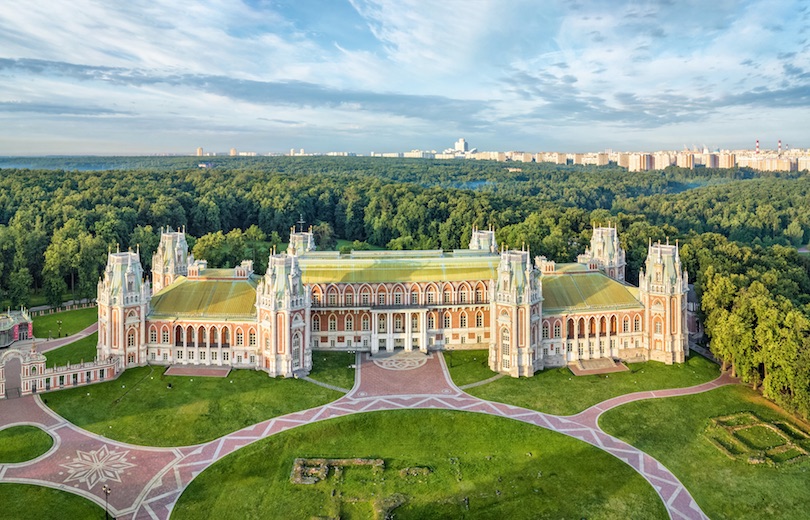
Once the summer residence of Catherine the Great, the stunning Tsaritsyno Palace is now a museum-reserve. The architecture is magnificent and there is a lovely park surrounding it for visitors to explore.
Located in the south of Moscow, the palace was commissioned in 1775 and recent renovations mean its lavish interior looks better than ever before with its elegant halls and beautiful staircases.
The exhibits on display look at the life of the empress as well as the history of Tsaritsyno itself. The huge palace grounds are also home to some other delightful buildings with the elegant opera house and wonderful brickwork of the Small Palace being particularly impressive to gaze upon.
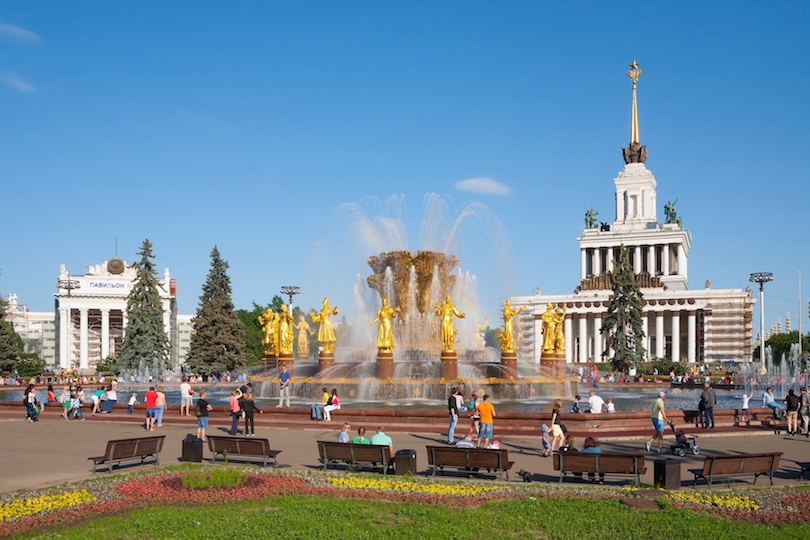
Starting out in 1935 as the ‘All-Union Agricultural Exhibition’, VDNKh has slowly morphed over the years into the fascinating open-air museum of today. Remarkably, over 400 buildings can now be found within its confines.
The huge park complex has numerous pavilions representing former Soviet republics on show, such as those of Armenia and Turkmenistan and the distinctive architecture of each of the buildings is always interesting to gaze upon. In addition to this there is the fascinating Memorial Museum of Cosmonautics which is dedicated to space exploration and the fun Moskvarium aquarium even offers you the chance to swim with dolphins.
With lots of eateries scattered about and numerous entertainment options such as horse-riding and zip-lining, there is something for everyone to enjoy; the Friendship of Nations fountain truly is wonderful.
15. Kremlin Armoury
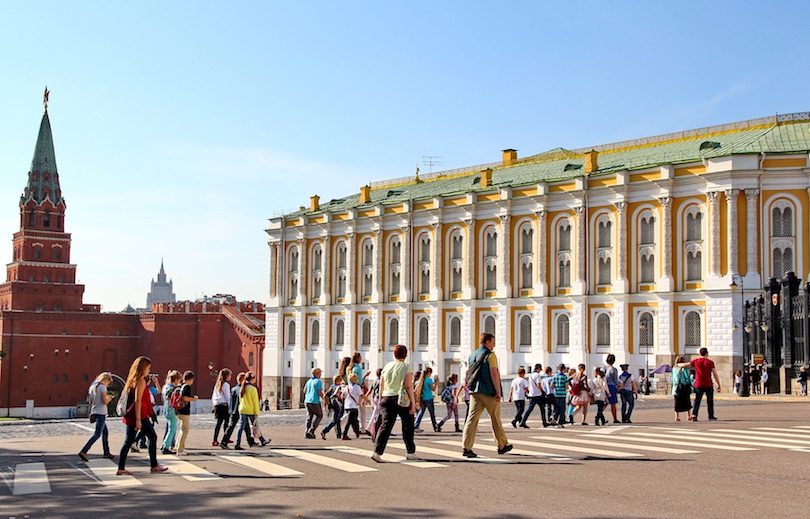
One of the oldest museums in the city, the Kremlin Armoury has a wealth of treasures; highlights include the ornate Grand Siberian Railway egg, the historic Cap of Monomakh and the stunning Imperial Crown of Russia which often has a crowd of tourists around it, jostling to take a photo.
Once the royal armory, there are loads of fascinating objects on display. Perusing the many sabers, jewelry, armor and more is as interesting as it is educational and entertaining and the swords are so finely crafted that you’ll almost wish you could pick up one and wield if yourself.
Established in 1851, the museum is situated in the Moscow Kremlin.
14. GUM Department Store

Standing for ‘Main Universal Store’ in Russian, GUM is stunning. Its wonderful skylights and beautiful facades mean it doesn’t look out of place alongside its illustrious neighbors on Red Square.
With over 200 shops, boutiques and upmarket eateries inside, it is a shopaholic’s heaven and concerned partners will be glad to find more affordable options alongside luxury brands such as Dior and Prada.
The main department store in the city, GUM was opened in 1893. The stunning architecture makes it well worth a visit even if shopping isn’t your thing.
13. Moscow Metro
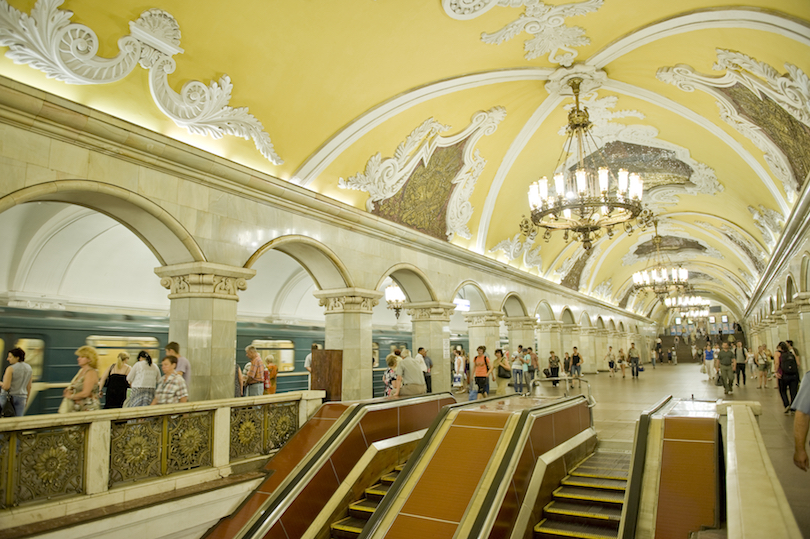
It’s not often that public transport looks like a work of art. So many stops on the Moscow Metro will astound visitors with their beauty and elegance.
Decked in marble and with frescoes covering the walls, the stations are amazing to gaze upon and are part of one of the longest metro systems in the world, with the first stations opened in 1935.
Using the metro is the quickest and easiest way to get around Moscow and braving the crowds of commuters is well worth it for the beauty all around you.
12. Arbat Street
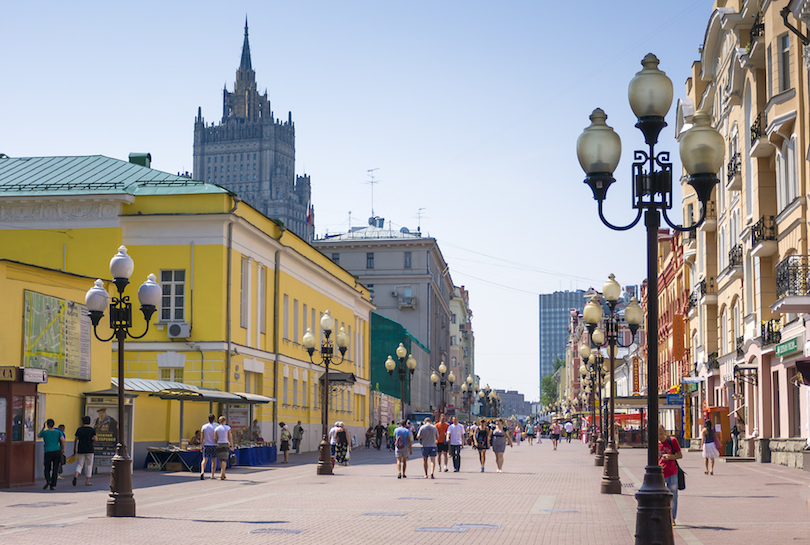
An elegant yet lively street, Arbat is full of impressive architecture and was once a popular place to live for aristocrats, artists, and academics.
A historic place, it is down Arbat Street that Napoleon’s troops are said to have headed on their way to capture the Kremlin.
Nowadays, there are many cafes, restaurants, and shops, as well as various monuments and statues to former residents such as Alexander Pushkin who was reputed to be a lover of the Russian Empress due to his massive influence in court.
11. Novodevichy Convent
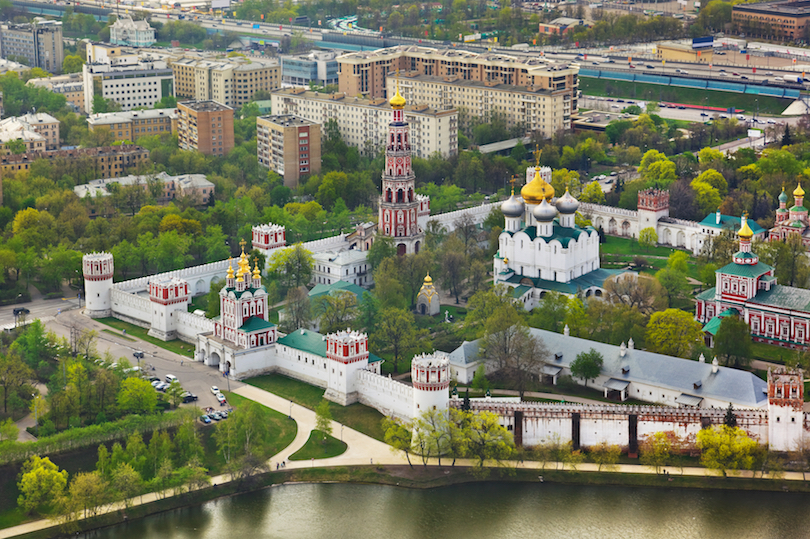
Drenched in history, the Novodevichy Convent is located in a striking building that was once a fortress. This captivating place is well worth visiting when in Moscow.
Founded in 1524, the convent houses four cathedrals; Smolensk Cathedral is the undoubted highlight due to its delightful 16th-century frescoes.
Wandering around the grounds is like stepping back in time. The Novodevichy Cemetery is where many famous leaders of the Soviet Union are buried, such as Yeltsin and Khrushchev.
10. Pushkin Museum
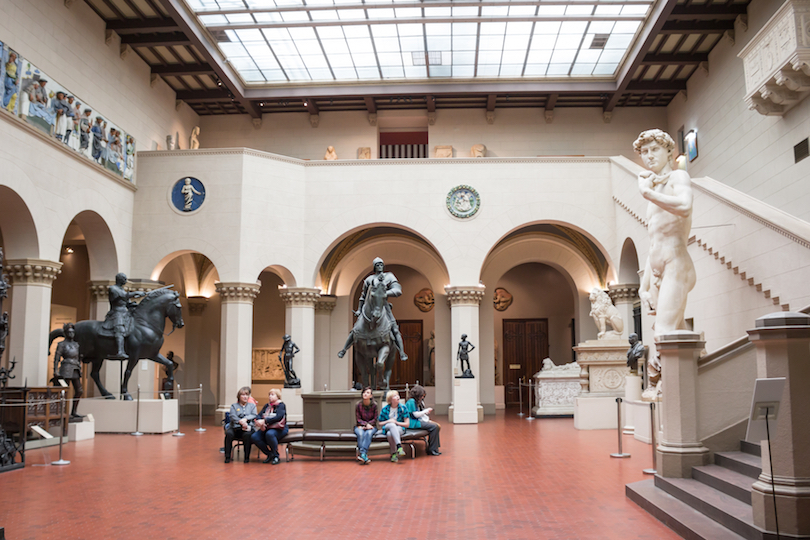
Despite its name, the Pushkin Museum of Fine Arts actually has no connection at all to the famous poet other than that it was named in his honor after his death. A delight to visit, its extensive collection focuses on European art with masterpieces by Botticelli, Rembrandt, and van Gogh all featuring.
Sculptures, graphic art, paintings and more can be found in its beautiful galleries; various sections look at themes and epochs such as the Renaissance, the Dutch Golden Age, and Byzantine art.
Among the many highlights are the clownish characters which can be found in Cezanne’s Fastnacht (Mardi Gras) and the twirling ballerinas who look so elegant in Degas’ Blue Dancers. Picasso’s Young acrobat on a Ball is also well worth checking out for its interesting use of shapes and colors.
9. Christ The Savior Cathedral
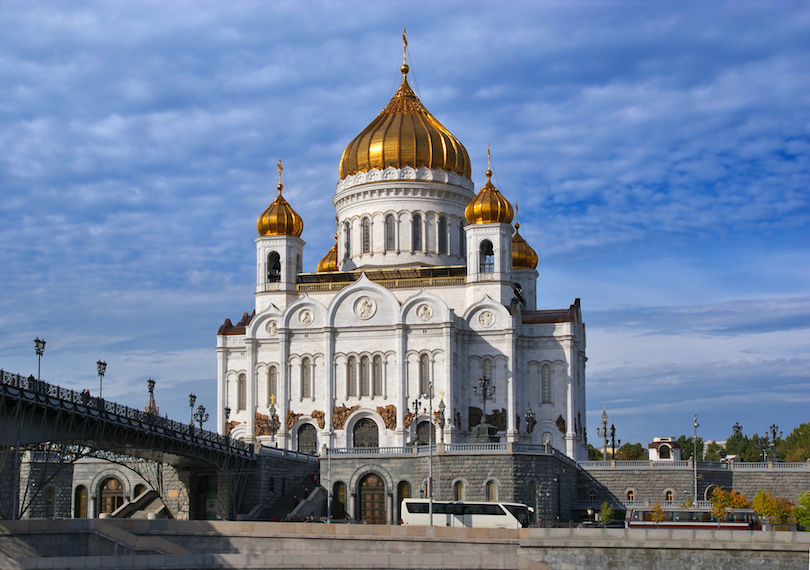
This gorgeous Russian Orthodox cathedral is located on the banks of the Moskva River, just a stone’s throw away from the Kremlin.
The church as it stands today was consecrated in 2000, as the original church that stood here was destroyed on the command of Josef Stalin in 1931 due to the anti-religious campaign.
With its delightful golden dome, spires and dazzling white facades, the Christ the Savior Cathedral is stunning. The interior is just as captivating to wander around, with its beautifully tiled floors and impressive altar.
8. Lenin Mausoleum
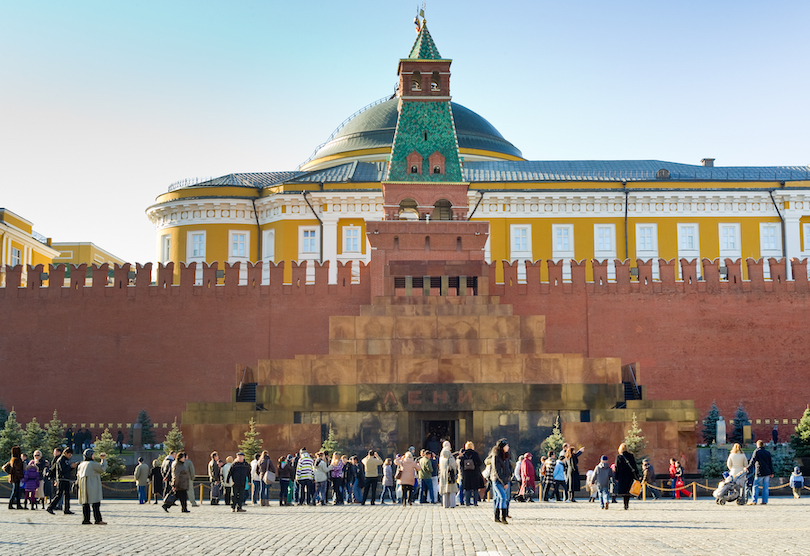
Opened to the public in 1924, Lenin’s Mausoleum is one of the most popular tourist attractions in Moscow. The red granite structure is located at the heart of the city in Red Square.
Lenin’s embalmed body lies in a glass sarcophagus; it is a somewhat eerie experience walking past the former leader of the Soviet Union but is well worth doing as you understandably can’t do it anywhere else in the world.
After visiting the mausoleum, head to the Kremlin wall right next to it for more graves of important communist figures such as Stalin and Brezhnev.
7. Tretyakov Gallery
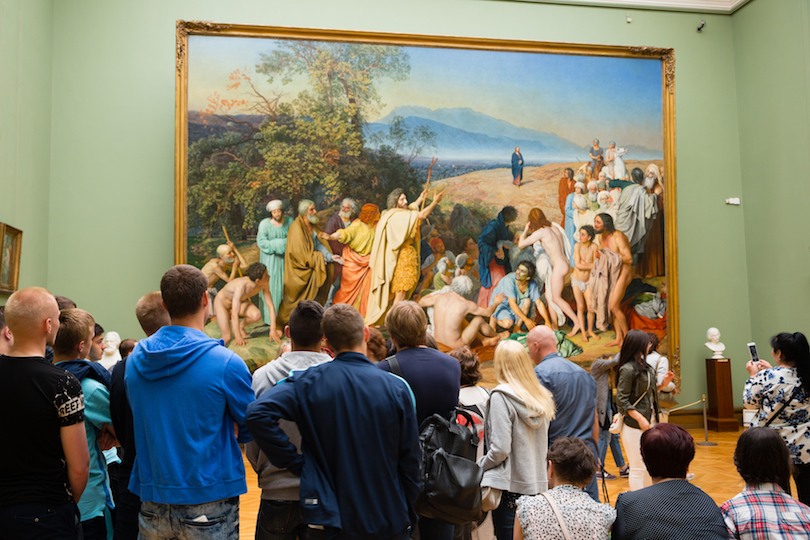
Home to the most extensive and impressive collection of Russian fine art in the world, the State Tretyakov Gallery is definitely worth visiting when in Moscow for the wealth of amazing art pieces that it has on display.
Having started out as the private art collection of the Tretyakov brothers, there are now over 130,000 exhibits. Highlights include the iconic Theotokos of Vladimir which you will almost certainly recognise despite probably not knowing the name and Rublev’s Trinity which is considered to be one of highest achievements in Russian art.
An absolute must for art lovers, the State Tretyakov Gallery will delight visitors with all that is has to offer.
6. Kolomenskoye
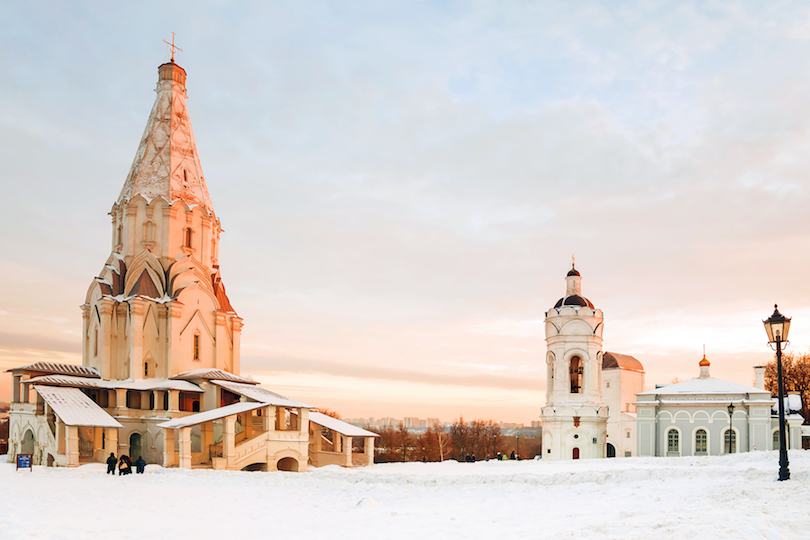
Once a royal estate, Kolomenskoye is now a museum-reserve and lies a few kilometers outside of the city center. A captivating place to visit, there is a plethora of history on show and the site overlooks the Moskva River.
Consisting of four historical sites, there are extensive gardens for visitors to explore, as well as loads of interesting old buildings, the former village of Kolomenskoye itself and the impressive Palace of the Tsar Alexey Mikhailovich – once considered the Eighth Wonder of the World by contemporaries.
Among the many stunning sights, it is the brilliantly white Ascension Church that is the undoubted highlight – dating back to 1532.
5. Gorky Park
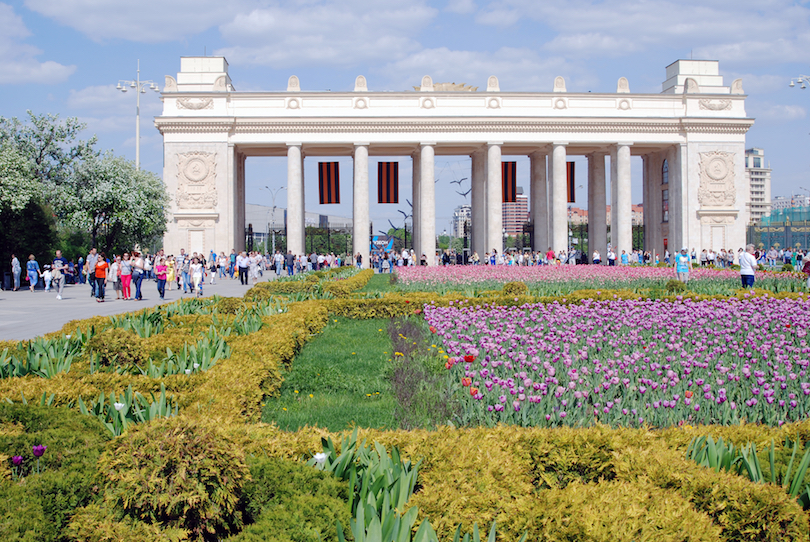
Lying alongside the Moskva River, the huge Gorky Park is a lovely place to visit. Its extensive gardens are home to numerous cultural institutions and visitors should definitely check out the Garage Museum of Contemporary Art and while the eclectic exhibits may not always feature such incredible sights as a balloon-covered rider on a zebra; they certainly always succeed in pushing back the boundaries of art.
Pop-up exhibitions and festivals can be found from time to time in the park itself and there is an open-air theatre and numerous eateries alongside a plethora of leisure activities.
Whether it’s cycling, table tennis or yoga that you are after or beach volleyball and rowing, Gorky Park certainly has it. In winter, there is a huge ice rink for visitors to enjoy.
4. Bolshoi Theatre
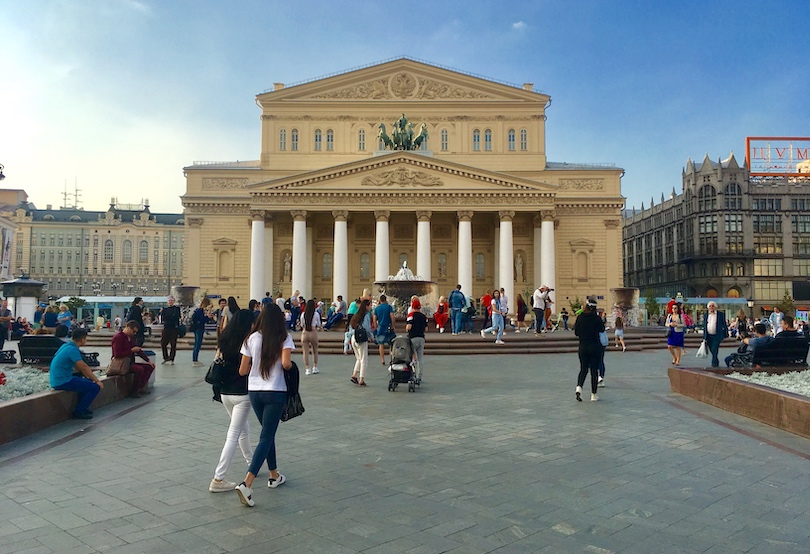
The Bolshoi Theatre is the main theater in the country. The amazing opera and ballet performances it has put on over the centuries go a long way in explaining Russia’s rich history of performing arts.
While the Bolshoi Ballet Company was established in 1776, the theater itself was opened in 1825. The glittering, six-tier auditorium is lavishly and decadently decorated; it is a fitting setting for the world-class performances that take place on its stage.
Spending a night watching a performance of such classics as The Nutcracker or Swan Lake at the Bolshoi Theatre is sure to be a memorable experience and the beauty all around you only adds to the sense of occasion.
3. Moscow Kremlin
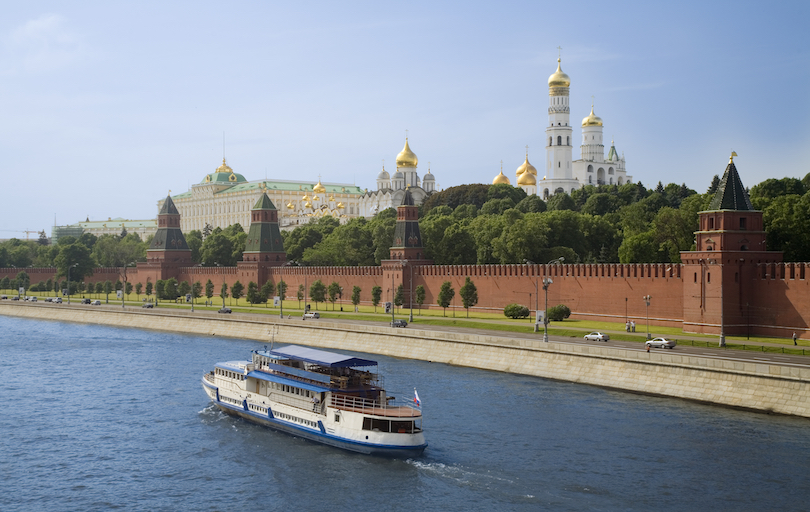
This famously fortified complex is remarkably home to five palaces and four cathedrals and is the historic, political and spiritual center of the city. The Kremlin serves as the residence for the country’s president. It has been used as a fort, and this fact is made clear by its sheer size. The Kremlin’s outer walls were built in the late 1400s.
Under Ivan III, better known as Ivan the Great, the Kremlin became the center of a unified Russian state, and was extensively remodeled. Three of the Kremlin’s cathedrals date to his reign that lasted from 1462-1505. The Deposition Church and the Palace of Facets were also constructed during this time. The Ivan the Great Bell Tower was built in 1508. It is the tallest tower at the Kremlin with a height of 266 feet (81 meters).
Joseph Stalin removed many of the relics from the tsarist regimes. However, the Tsar Bell, the world’s largest bell, and the Tsar Cannon, the largest bombard by caliber in the world, are among the remaining items from that era. The Kremlin Armory is one of Moscow’s oldest museums as it was established more than 200 years ago. Its diamond collection is impressive.
The Kremlin’s gardens – Taynitsky, Grand Kremlin Public and Alexander – are beautiful. The Kremlin has also served as the religious center of the country, and there is a tremendous number of preserved churches and cathedrals here. The collections contained within the museums include more than 60,000 historical, cultural and artistic monuments. Those who enjoy the performing arts will want to consider attending a ballet or concert at the State Kremlin Palace. Completed in 1961, it is the only modern building in the Kremlin.
2. Red Square
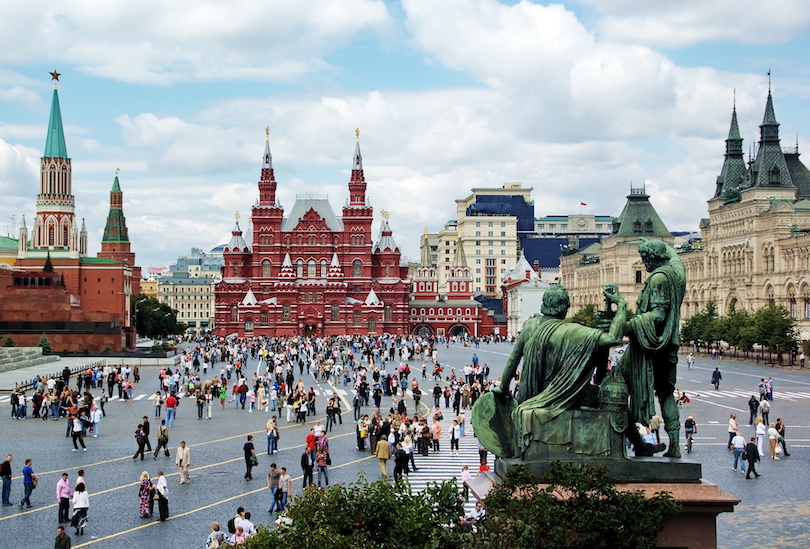
Lying at the heart of Moscow, Red Square is the most important and impressive square in the city. It is one of the most popular tourist attractions due to its wealth of historical sights and cultural landmarks.
Drenched in history, the huge square is home to incredible sights such as the Kremlin, St. Basil’s Cathedral and Lenin’s Mausoleum, among others. Consequently, it is not to be missed when in Moscow as it really is home to the city’s most stunning monuments.
It is here that many important moments in Russian history took place; the former marketplace has hosted everything from Tsar’s coronations and public ceremonies to rock concerts and Soviet military parades. Wandering around the massive square is a humbling experience and undoubtedly one of the highlights the city has to offer.
1. Saint Basil’s Cathedral
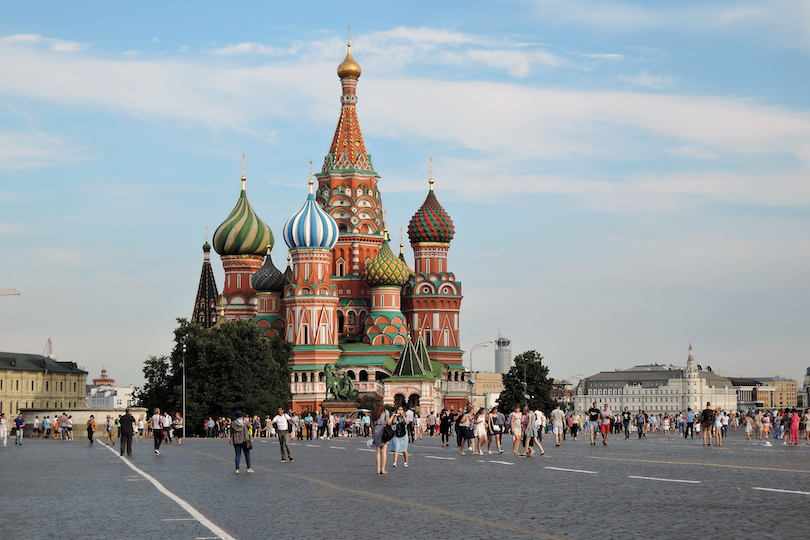
Located in the impressive Red Square, St. Basil’s Cathedral is gorgeous; its delightful spires appear as if out of a fairytale. The most recognizable building in the country, the cathedral is very much a symbol of Russia. No visit to Moscow is complete without having taken in its unique and distinctive features.
Ivan the Terrible ordered the cathedral’s construction in the mid-16th century, and legend holds that Ivan put out the architect’s eyes so that he would be unable to build another cathedral more glorious than St. Basil’s. Designed to resemble the shape of a bonfire in full flame, the architecture is not only unique to the period in which it was built but to any subsequent period. For various reasons, both Napoleon and Stalin wanted to destroy the cathedral but fortunately did not succeed.
Known for its various colors, shapes and geometric patterns, St. Basil’s Cathedral houses nine different chapels that are all connected by a winding labyrinth of corridors and stairways. On the lower floor, St. Basil’s Chapel contains a silver casket bearing the body of St. Basil the Blessed.
Throughout the cathedral are many beautiful murals, frescoes, wooden icons and other art works and artifacts. Outside the cathedral is a lovely garden with the bronze Monument to Minin and Pozharsky, who rallied an all-volunteer Russian army against Polish invaders during a period of the late 16th century known as the Times of Troubles.
Share this post:
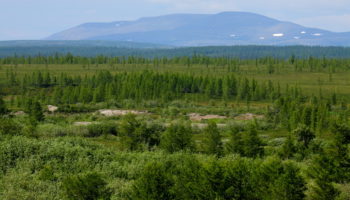
9 Most Beautiful Regions in Russia
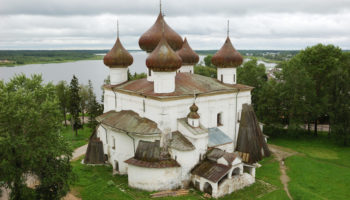
14 Most Scenic Small Towns In Russia
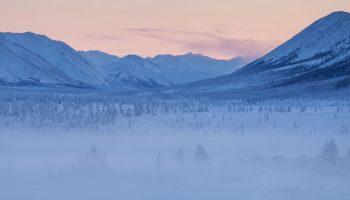
10 Most Amazing Destinations in Eastern Russia
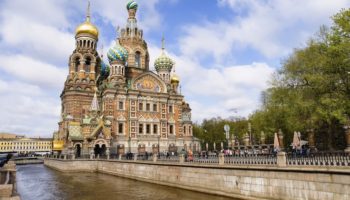
15 Top Tourist Attractions in Saint Petersburg, Russia
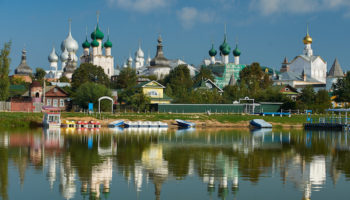
10 Best Places to Visit in Russia
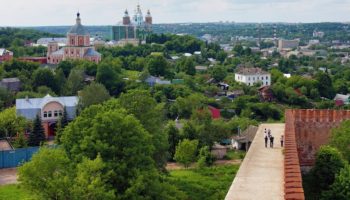
15 Best Cities to Visit in Russia
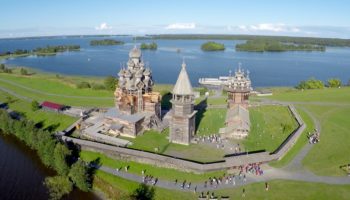
10 Top Tourist Attractions in Russia
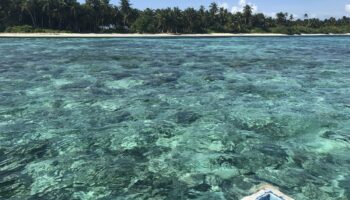
12 Best Things to Do in the Maldives
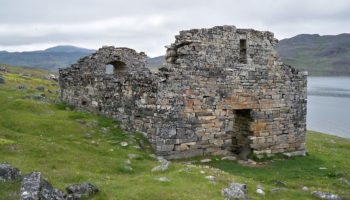
Discover the Hvalsey Church in Greenland
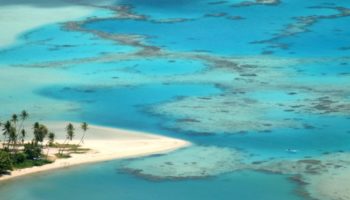
8 Most Beautiful Society Islands
- United Arab Emirates
- Switzerland
- The Netherlands
- Puerto Rico
- United States
- New Zealand
- ➨ Choose from World Map
- Budget Travel
- Family Travel
- Getting Around
- Visas & Passports
- Work with Us
Browsing Category
- Czech Republic
- Saint Martin
- Uncategorized

Moscow Travel Guide: Best Things to Do + More [2023]
· everything to know about visiting moscow, including the best things to do and how to get around. ·.

Moscow is Russia’s vibrant capital city, and it also happens to be the largest city in all of Europe. The city’s long and infamous history makes it one of the most unique places we have ever visited.
The architecture ranges from centuries-old palaces to uniform, gray concrete buildings. The people range from cold and private to warm and welcoming. Moscow is a city is strong juxtapositions, and we learned a lot during our time there.
This post will break down all you need to know about visiting Moscow, including the best things to do, how to get there, how to get around, and more.

The Best Things to Do in Moscow
1. explore the red square.
The Red Square is the heart of Moscow. Most of the city’s top attractions can be found here, including just about everything on this list. The Kremlin, St. Basil’s Cathedral, and Lenin’s Mausoleum are all located here, and the State Historical Museum and GUM are not far from here, either.
The Red Square is a common home for parades, protests, and seasonal celebrations. There are massive Christmas celebrations here, with food vendors and carnival rides set up in numbers.

2. Check Out the Ziferblat
The Ziferblat is a café in Moscow that is unlike any café we have ever been to. While most cafes charge you for your drinks and food, the Ziferblat charges you for your time.
Upon arrival, you are given a clock. When you leave, the barista calculates how much time you spent in the café and charges you accordingly. This concept was created to help visitors to be more intentional with their time, and the cafe itself is incredibly charming.
For a detailed look at everything you need to know before you visit, make sure you read my post about visiting the Ziferblat Cafe in Moscow .

3. Marvel at St. Basil’s Cathedral
St. Basil’s Cathedral is one of the most iconic churches in the world, and it was the single thing we were most excited to see while in Moscow. Built almost 500 years ago, St. Basil’s Cathedral is recognized by its colorful domes and whimsical style. The church is of the Russian Orthodox faith, and the inside is just as wondrous as the outside.
St. Basil’s Cathedral is located on the edge of the Red Square, making it incredibly convenient to visit. Entrance for non-worshippers costs 800 rubles, and tickets can be bought at the church

4. Explore the Kremlin
The Kremlin is the largest active fortress in Europe, and it is the site of most of Russia’s government affairs. In addition to government buildings, the Kremlin Complex is filled with courtyards, towers, and museums that are open to the public. If you have the time, you could spend a couple of days fully exploring all that there is to see in the Kremlin.

5. Walk Through Lenin’s Mausoleum
Vladimir Lenin is one of the most important figures in Russian history, and his body is located perfectly embalmed in a mausoleum in the Red Square. The Mausoleum is open to the public to visit, and as long as you are willing to go through a few security checks, it is easily one of the best things to do in Moscow. Its convenient location in the Red Square makes it a can’t miss attraction.
There is absolutely no photography allowed inside the Mausoleum. Do not test this rule.

6. Wander Along Arbat Street
The Arbat is a very popular street in Moscow that is lined with stores, cafes, and other touristy attractions. It is one of the oldest streets in the city, dating back to the 1400s. This street is both quaint and trendy, and there are many walking tours that introduce tourists to the neighborhood’s wonders and highlights.

7. Catch a Show at the Bolshoi Theatre
As a lover of the arts, it is hard to think of Moscow and not think of ballet. Russia has always been a top dog in the world of fine arts, and Bolshoi Theater is one of the best places to catch a performance. We were lucky enough to attend an Opera here, and it is a venue that you don’t want to miss out on if you enjoy opera, ballet, or orchestral performances.
8. Visit the State Historical Museum
The State Historical Museum is one of the most respected museums in Moscow. Despite its name, it is not really focused on the history of Russia as a nation. Rather, it contains a collection of artifacts from all throughout Russia’s history.
The museum’s collection is very broad in nature. It houses some items from indigenous tribes that used to occupy the region, pieces collected by the Romanov family, and more.
9. Wander Around GUM
GUM is an absolutely massive mall within walking distance of the Red Square. It isn’t just the size that draws visitors here; it’s the sense of luxury. The mall is so beautiful inside, much like the metro stations.
While visiting a mall might not sound like it belongs on a bucket list, this mall does. You will not want to miss out on visiting GUM while in Moscow.

10. Admire the Cathedral of Christ the Saviour
While St. Basil’s Cathedral is the most iconic church in Moscow, it isn’t the only one. The Cathedral of Christ the Saviour is absolutely stunning, with massive golden domes. It is the tallest Orthodox church in the world, and it is the seat of the Orthodox Patriarch of Moscow.
It is located just about a mile from the Red Square, just south of the Kremlin Complex. You can walk to it from the Red Square in about 20 minutes.
How to Get to Moscow
Flying to moscow.
Moscow has three major international airports: Sheremetyevo (SVO) , Domodedovo (DMO) , and Vnukovo (VKO) . All three of them are directly connected to downtown Moscow by the Aeroexpress trains, which leave every 30 minutes throughout the day. By Aeroexpress train, you can expect to get to the city center in 25-45 minutes depending on the airport that you fly into.
Sheremetyevo is the biggest and busiest of the three airports, and it is the one you are most likely to fly into – especially if you are coming from outside of Europe or the Caucus region. We flew into Sheremetyevo on a direct flight from New York City.
I usually provide backup airport options, because flying right into the city isn’t always the cheapest way to get where you’re going. Unfortunately, when it comes to Moscow, don’t really have a choice other than to fly right into Moscow. It is a very remote city, and it is usually the cheapest place to fly into in Russia as a whole.
Since Sheremetyevo is so busy, you will probably find a great flight option anyway. I wrote in my post about finding cheap flights that using hub airports will lead to more affordable airfare, and the same logic applies here. Even though Russia’s national airline, Aeroflot, is no longer a member of the SkyTeam Alliance, Moscow is still a major hub connecting passengers from all over the world.

READ OUR CHEAT SHEET
Train or Bus to Moscow
Trains and buses are one of the most popular ways to get around Europe. However, they’re of very little use when you’re trying to get to Moscow.
Moscow is hundreds of miles from the nearest major cities. The only major European city that can even be reached within 8 hours on the ground is St. Petersburg, and even the Baltic capitals of Riga, Vilnius, and Tallinn are over 12 hours away.
If you want to get to Moscow, the best option is almost always to fly. While the train routes to Moscow are scenic, they simply take forever.
How to Get Around Moscow
METRO | TROLLEYS | TRAMS | BUSES
Moscow has one of the most memorable metro systems in the world. Its metro lines are very deep underground, and the stations are absolutely stunning. Each station has its own unique style, but all of them contain escalators that seem to go on forever.

The system was built in an effort to showcase the power of the Soviet Union and its bright future. The plans were a form of propaganda, but they resulted in what is still one of the most visually appealing subway systems on earth.
Moscow’s metro system isn’t just pretty. It is also very useful and accessible. The system has 17 lines that connect the city and its surrounding area.
But wait; there’s more!
The Moscow metro system is also incredibly affordable, with each ride costing less than a dollar. The metro is by far the best way to get around Moscow, as it is almost impossible to beat the connection times and the low cost to ride.
Tickets can be bought at electronic, English-speaking kiosks in stations, or directly from ticket counters at certain larger stations. There are also day passes available, which are a very solid option if you plan on riding the metro several times per day.

The metro is by far the best way to get around Moscow.
In addition to the metro system, Moscow also has a network of buses, trams, and trolleys. This system is nowhere near as convenient or well-connected as the metro, though, and is likely of little use to you during your trip. There is no Uber in Moscow, but a similar app named Yandex is available if you need a ride in a pinch.
How Many Days Do You Need in Moscow?
Moscow is the biggest city in all of Europe, and it is absolutely loaded with things to do. You could spend weeks in Moscow and still find new things to do. Of course, most travelers don’t have that kind of time to spend in one place!
I recommend spending no less than three full days in Moscow, and ideally closer to five or seven.
Moscow is very spread out, and it can take some time to get from one major point to another. There are also so many places that are nice to just sit back and relax, which is hard to do when you’re in a hurry trying to cram activities into just a few days.
If you only have a week to visit Russia, I’d advise spending all of the time in one city. If you decide to split your time between Moscow and St. Petersburg, I recommend not trying to squeeze in any day trips beyond those two cities.

When Is the Best Time of the Year to Visit Moscow?
There are two different ways to approach this question. Personally, I think the best time to visit Moscow is around Christmas and New Year’s Day. While the weather will be absolutely freezing, Moscow is a surreal winter wonderland in December and January.
We were in Moscow right before Christmas. While it was very cold, you can always bundle up. Exploring the Christmas markets and pop-up ice skating rinks throughout Moscow is one of my favorite memories from anywhere I’ve traveled, and I dream of going back to do it again.
If you aren’t fond of the cold, Moscow is beautiful in the summer. It tends to get pretty cold in the shoulder seasons, so if you want warm weather, you should plan to visit in the summer. Moscow actually gets pretty warm in July and August, and there are a bunch of fantastic places to soak up the sun within the city.
The best time to visit Moscow is either around Christmas or from late May to August.

Is Moscow Safe to Visit?
While Moscow is a truly wonderful city, there’s no denying that visiting Russia comes with risks. As the country is run by an infamous communist dictator, concerns about visiting are valid. While we didn’t experience any sort of threat or negative treatment during our time in Moscow, we visited in a peaceful time.
In our experience, Russia doesn’t seem to detain normal Americans or Westerners to use as pawns. As a regular person, as long as you don’t commit any crimes, there is a slim chance you will run into any issues. However, Russia will not hesitate to enforce its laws against foreigners, and illegal behaviors will likely land you in a very compromising position.
Russia will not hesitate to enforce its laws against foreigners, and illegal behaviors will likely land you in a very compromising position.
To make matters worse, Russia has a bad reputation for gang violence. While the Russian mafia has very little interest in normal Western tourists, they won’t hesitate to pick a fight with anyone who ventures into their sphere of influence. If you seek out illegal substances or activities, you could be a target of the mafia.
If you seek out illegal substances or activities, you could be a target of the mafia.
Finally, since Russia’s invasion of Ukraine, things are all very different. Russia is currently at war, and there are battles raging within 8 hours of Moscow. While it is still relatively safe to visit, that could change at any time as the war with Ukraine continues.
Is Moscow Worth Visiting?
Without a doubt, Moscow is worth visiting. It is one of the most unique major cities we have ever visited, and we hope to make it back one day. The Russian Orthodox churches are stunning, the city’s history is unlike any other, and the food is to die for.
While many visitors prefer St. Petersburg to Moscow, I think Moscow deserves a lot of hype of its own. Moscow is the beating heart of Russian culture and history, and it’s a place I highly recommend checking out if you have the chance.

That’s all we have for you about Moscow! I hope this post was helpful as you plan your trip to Russia’s capital.
Have you been to Moscow? Or is this your first time visiting? Comment below if you have anything to add to our travel guide!
Hi, I'm Greg. I'm an avid traveler who has traveled to over 50 countries all around the world with my wife and kids. I've lived in Italy, Mexico, China, and the United States, and I dream of moving abroad again in the future. With this blog, I provide my audience with detailed destination guides to my favorite places and pro-tips to make travel as stress-free as possible.
Leave a comment
Save my name, email, and website in this browser for the next time I comment.
Meet The Author - Greg

Recent Post

Most Famous Churches in Florence, Italy: Where to Visit
July 5, 2024

10 Best Coffee Drinks to Buy From Starbucks in India
April 26, 2024

How Much Does a Trip to Egypt Cost: Budget Breakdown
March 10, 2024

Best Time to Visit the India Gate in Delhi [2024]
March 1, 2024

Flying with a Sinus Infection: Tips to Avoid Pain
February 20, 2024


IMAGES
VIDEO
COMMENTS
Article 34 - Process Patents: Burden of Proof. 1. For the purposes of civil proceedings in respect of the infringement of the rights of the owner referred to in paragraph 1(b) of Article 28, if the subject matter of a patent is a process for obtaining a product, the judicial authorities shall have the authority to order the defendant to prove that the process to obtain an identical product is ...
We would like to show you a description here but the site won't allow us.
1. Members may require, as a condition of the acquisition or maintenance of the intellectual property rights provided for under Sections 2 through 6 of Part II, compliance with reasonable procedures and formalities. Such procedures and formalities shall be consistent with the provisions of this Agreement. 2.
The TRIPS Agreement binds all Members of the WTO (see Article II.2 of the WTO Agreement)." The TRIPS Agreement was amended through the Protocol of 6 December 2005 that entered into force on 23 January 2017. The amendment inserted a new Article 31bis into the Agreement as well as an Annex and Appendix. These provide the legal basis for WTO ...
Section 5:- Patents (Articles 27 to 34) Article 27 of the TRIPS Agreement establishes patents as intellectual property rights granted to inventors, enabling them to prevent others from creating, using, selling, or importing the patented invention within a designated region for a specified period. However, patentability is subject to three ...
tents of the TRIPS Agreement in light of the preamble and Article 1. The TRIPS 109 Vienna Convention Art 31. 110 UNCTAD/ICTSD, Resource Book on TRIPS and Development (CUP New York 2005) p. 45. 111 Vienna Convention Art 2(1)(a). 112 Vienna Convention Art 26. 113 TRIPS Agreement Art 1.1, WTO Agreement Art XVI.4. Cf. WTO United States - Section
The grant of the license was reversed as inconsistent with TRIPs Article 27(1). Additional compulsory licensing provisions in the Irish 1992 Patent Act may violate TRIPs Article 27. The Irish patent law still allows for compulsory licensing in numerous circumstances where the invention is not "worked" in Ireland.
2c. The exporting Member has notified the Council for TRIPS of the grant of the licence, including the conditions attached to it. The information provided includes the name and address of the licensee, the product(s) for which the licencehas been granted, the quantity(ies) for which it has been granted, the country(ies) to which the
This Act provided, in Art. 13, that "the proprietor of a mark may, by virtue of his exclusive right, oppose" the following acts: "1. Any use made of the mark or of a like symbol for the goods or services in respect of which the mark is registered, or for similar goods or services" and "2.
TRIPS—Article 27—Patentable Subject Matter. 1. Subject to the provisions of paragraphs 2 and 3, patents shall be available for any inventions, whether products or processes, in all fields of technology, provided that they are new, involve an inventive step and are capable of industrial application. Subject to [the transitional provisions ...
Emergence of the TRIPS Agreement. The Agreement on Trade related Aspects of Intellectual Property Rights (hereinafter referred to as TRIPS), together with the 1967 Stockholm Conference that adopted the revised Berne and the Paris Convention which created the World Intellectual Property Organization (WIPO) can be termed as the most significant milestone in the development of intellectual ...
The Protection of Undisclosed Information: Commentary of Article 39 TRIPS. Published in Thomas Cottier and Pierre Véron (eds) Concise International and European IP Law: TRIPS, Paris Convention, European Enforcement and Transfer of Technology (Kluwer Law International, 2014), together with Meitinger. This is a brief updated commentary of ...
See section 34 South African Patent Act 57 of 1978 compare with PDA 1970 P2 LFN 2004, s 4 (1) (a). 52 PDA 1970 P2 LFN 2004, s 4 (4). 53 Folarin Shyllon, Intellectual Property Law in Nigeria (Max Planck Institute for Intellectual Property, Competition and Tax Law, Munich 2003) 147. ... 132 TRIPS Council discusses Art 3 (b) ...
The TRIPs Agreement had widened the scope of patents subject matter in Article 27 by providing that all the inventions are patentable whether worked locally or imported in the country of its grant. However some exemptions were given under clause 2 & 3 of the same Article but has already provided in exemption clause that the provisions of Art ...
Destination: Florence. What to see: Every art lover ought to make the obligatory pilgrimages to the Uffizi and Galleria dell'Accademia. But discover lesser-known spots like the Bargello ...
One Tank Trip: Music is Art Festival Toggle header content. News. ... News / Sep 12, 2024 / 12:34 PM EDT. Getting their start in Buffalo, the Goo Goo Dolls still have tight toots to Western New York.
Join the 2024 Venice Biennale and Istanbul Biennial Art Tour, a unique 9-night art history trip in Italy and Turkey open to everyone, from artists and art lovers to students and lifelong learners. The cost of CAD $ 4 570 (around US$ 3420) includes 9-night double accommodation in well-rated and centrally located hotels in Venice and Istanbul ...
Luxury art vacations. Artful Jaunts blend unique art destinations and behind the scenes experiences with luxury accommodations and fine dining to create extraordinary getaways that enrich, educate, and entertain. Artful Jaunts are typically 3 to 8 days long, for small groups of 12-20 people, and are offered at three levels: Discover (for the ...
WASHINGTON (TND) — The House Oversight Committee on Thursday condemned the FBI for allegedly refusing to cooperate with the committee's inquiry into allegations Minnesota Gov. Tim Walz worked with the Chinese Communist Party (CCP). The committee in August claimed Walz had been to China over 30 times and had been a fellow at a Chinese institution "that maintains a devotion to the CCP."
Sri Lanka sketching and painting vacation. Relaxing sketching break near the stunning Sri Lankan coast. From £1,280 8 days ex flights. Small group travel: 2024: 29 Nov. 2025: 3 Dec. £100 off per person when two book together, whether sharing a room or not £200 off per person if 4 book together.
Key Takeaways: Italy offers a plethora of art trips and tours. Explore the ancient monuments and baroque marvels of Rome. Discover the artistic legacy of Florence, the Renaissance capital. Uncover the hidden artistic gems of Bologna and Ravenna. Admire the artistic splendors of Venice and its unique workshops.
She studied art at the Louvre Museum in Paris and worked as a museum curator for over a decade including six years at the Portland Art Museum. She is an award-winning art educator who has led art trips around the world for the last fifteen years with Walking Softly Adventures.
13. Moskva City skyscrapers. Go to the Moscow International Business Center (also knowns as Moskva City) to see the city's beautiful landscape. Moscow city's complex of skyscrapers is beautiful by itself, but you can also go up one of the towers for a great overview of the city.
The interior is just as captivating to wander around, with its beautifully tiled floors and impressive altar. 8. Lenin Mausoleum. Opened to the public in 1924, Lenin's Mausoleum is one of the most popular tourist attractions in Moscow. The red granite structure is located at the heart of the city in Red Square.
3. Marvel at St. Basil's Cathedral. St. Basil's Cathedral is one of the most iconic churches in the world, and it was the single thing we were most excited to see while in Moscow. Built almost 500 years ago, St. Basil's Cathedral is recognized by its colorful domes and whimsical style.